Guided Phonics + Beyond Curriculum Question and Answer

Hi there and thanks so much for joining me to discuss more in-depth of my Guided Phonics and Beyond Curriculum. This past summer, I set out to write a completely comprehensive science of reading phonics program. The program evolved from “just” a phonics program, to a complete approach to teaching phonemic awareness, high frequency words, small-group reading, and of course whole-group phonics.
In its first academic year, Guided Phonics and Beyond is already making an impact for young readers. The program is also assisting teachers in tackling the Science of Reading approach in an easier and much more manageable approach. However, with anything new there will be kinks to work through and questions that will arise. Thankfully Guided Phonics and Beyond is created by ME so I am right here to answer those questions and offer support. I have a compiled a list of the most asked questions regarding Guided Phonics and Beyond. Today, I will be answering those questions.
Feel free to use the clickable table of contents directly below to skip to a Q/A that is needed at this time for your learners.
QUESTION: What is Science of Reading and where do I begin to learn more?

This response is is written by Lindsay Kemeny.
The term “science of reading” has become a buzzword recently and there is often confusion over what the term means. Sometimes teachers think this refers to a specific curriculum, program, or method, but the term actually refers to a large body of research on reading. It encompasses thousands of studies on reading.
Perhaps my favorite explanation of the science of reading comes from Louisa Moats who explains, “First, the body of work referred to as “the science of reading” is not an ideology, a philosophy, a political agenda, a one-size-fits-all approach, a program of instruction, or a specific component of instruction. It is the emerging consensus from many related disciplines, based on literally thousands of studies, supported by hundreds of millions of research dollars, conducted across the world in many languages. These studies have revealed a great deal about how we learn to read, what goes wrong when students don’t learn, and what kind of instruction is most likely to work the best for the most students.”
Recap part 1 if you missed it by clicking HERE or on the image below. Guest writing, Lindsay Kemeny, takes us through the first steps to transitioning into Science of Reading. Lindsay also has a set of AMAZING and free PD on the Science of Reading which can be found HERE.
QUESTION: What is Guided Phonics and Beyond and how do I start?
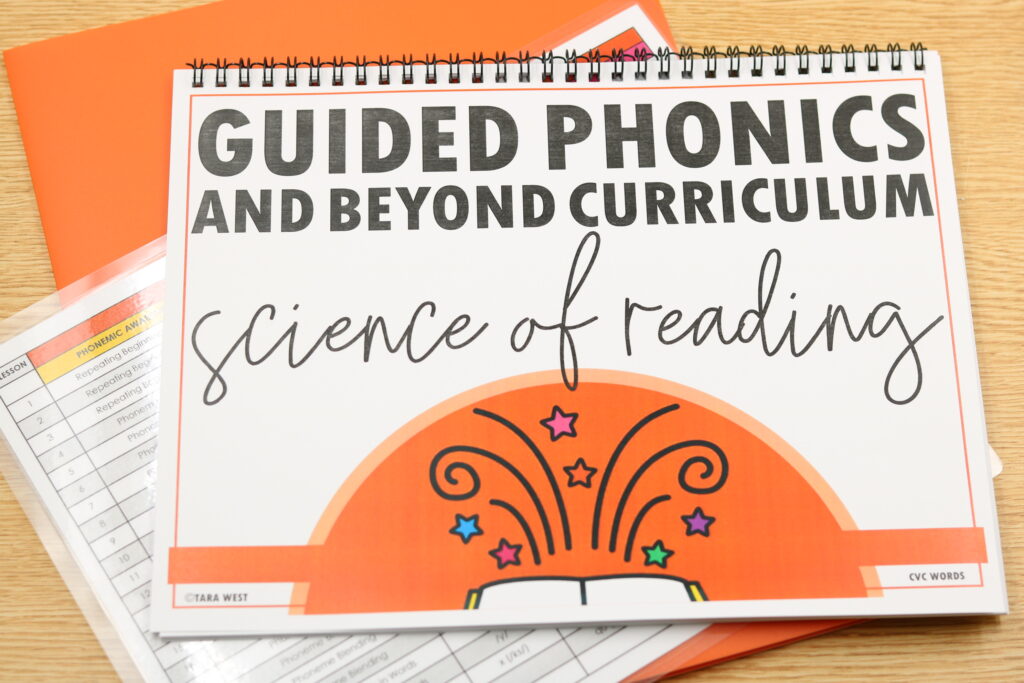
The Guided Phonics + Beyond program is so much more than a phonics curriculum or even a small-group curriculum! This program has thought about all the best practices when it comes to a Science of Reading approach and carefully plugged them in. The program is SYSTEMATIC. A lot of people can get the word systematic swapped with boring. Sure, it might be boring to someone if they repeat the same routine each day. However, some can also say school is “boring” but it’s still good for us, right ; )
Anytime you read about a Science of Reading approach you will be sure to see the word SYSTEMATIC attached to it. What does a systematic approach mean when it comes to the Guided Phonics + Beyond program? This program is carefully designed to include the most effective routines that are precise and timely. You do not need to flash through sound cards for 5 minutes or build words for 25 minutes. With the program being explicit, you know exactly how to run each routine to maximize its impact.
By having a systematic program, you get the opportunity to become REALLY great at teaching the routines. Compare this to making thirty new recipes in one month or repeating the same recipe thirty times. You will be really great at that one recipe with so much practice. You’ll learn right away what works, what doesn’t work, and how to differentiate it as well. The Guided Phonics + Beyond program is just that – -systematic and explicit! The program includes your phonemic awareness, phonics, fluency, vocabulary, and reading comprehension.
The Guided Phonics + Beyond program consists of 6 units. The best way to really immerse yourself in everything that Guided Phonics has to offer is by downloading and studying its scope and sequence. The scope will detail the phonemic awareness, focus skills, high frequency words, and the vocabulary as well. You can access the scope and sequence HERE.
QUESTION: What are 5 ESSENTIAL components to the Guided Phonics program?
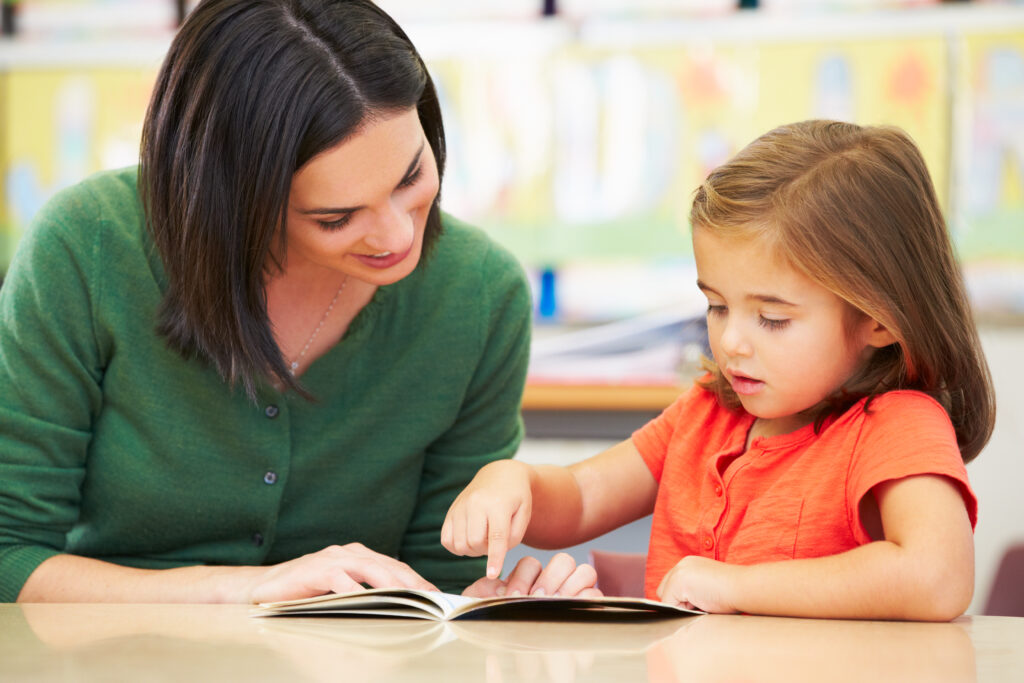
I get asked this question a lot! Naturally, teachers want to get to EVERYTHING in the Guided Phonics program. However, they find that they are limited on time. We will cover time allotment in the next question. For this question, let’s focus on FIVE components from the Guided Phonics program that I feel are the most important. You can cover these 5 components in a whole-group format, small-group format, or a mix of both.
- Phonemic awareness
- New skill introduction
- Orthographic mapping (high frequency words and skill-based words)
- Dictation OR word chains
- Decodable reader
Let’s break down each of those 5 components below starting with phonemic awareness. We know that phonemic awareness and phonological awareness are a vital foundation to any phonics program. Guided Phonics and Beyond has embedded oral phonemic awareness drills in each lesson plan. These drills are quick and efficient. You will simply read from the lesson plans and have the students respond. This is the easiest of the 5 components to implement.
New skill introduction is also embedded into the lesson plan on day 1. This is where students will learn a new phonics skill/sound and new high frequency words. This is done orally with examples generally written for students on the board.
Let’s move on to orthographic mapping. Orthographic mapping is extremely important to any program that is based upon science of reading best practices. My program embeds orthographic mapping into the lesson plans each and every day. This can be done whole-group or independently. If whole-group is your only option, try to provide students with a wipe-off surface so that they can join in mapping out words.
View a video of me going over the orthographic mapping below or HERE.
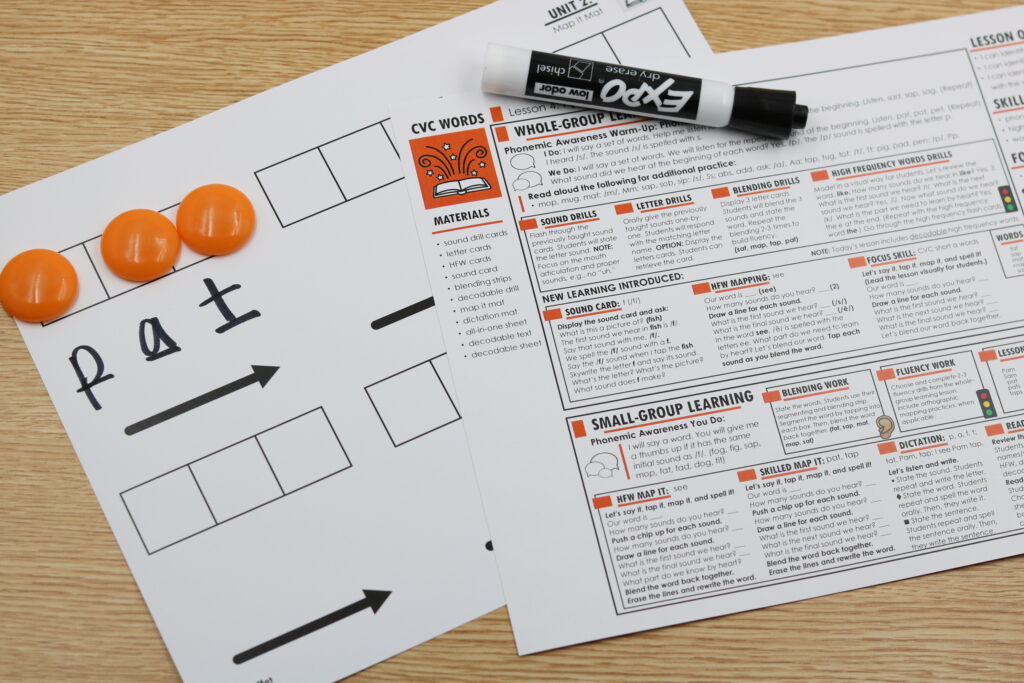
Below is a video of Katy’s students working on orthographic mapping in Unit 2 of Guided Phonics.
Dictation OR word chains would be component 4. Again, these two components could be completed whole-group with students having a writing surface or small-group. Both of these components are embedded within the lesson plans. You’re able to read through the word lists/sound changes straight from the lesson plan. In dictation, you will state a sound or word aloud. The students will record the matching sound/word onto their dictation mat or a white board. In word chains, students will build a word and then you will state for them to manipulate sounds within the word to create new words. Again, all of this will be typed out for you in the lesson plans. They are both vital components. However, if in a crunch for time choosing one or the other will work. You can also rotate this component if needed every other lesson, choosing either dictation or word chains.
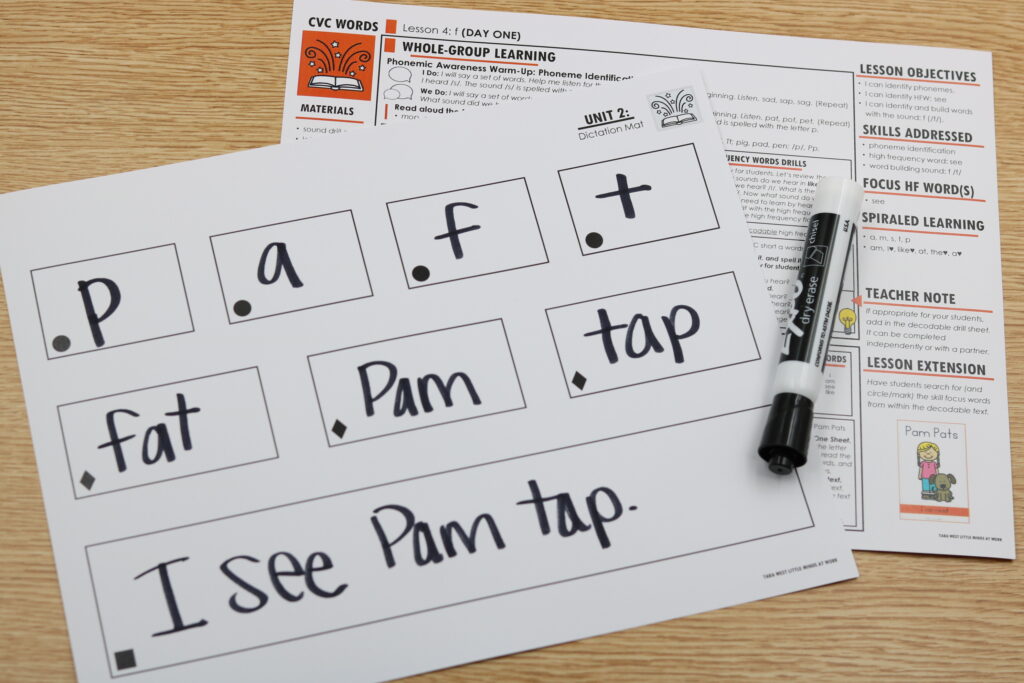
The final component of the essential 5 would be the decodable reader. In this component, students will put all of the new learning into action as they decode words using the new learning.
You can also continue to add in additional components once you get these 5 down solid and are in a routine.
QUESTION: How much time do I need for the essential 5 components?
We spoke about the essential 5 components to the Guided Phonics program. I also get asked a lot about how much time those essential 5 should be taking. I wanted to base this off a 25 minute phonics block. This would be for those only utilizing the program in a whole-group approach. If you are meeting with groups, you would have additional time dedicated to each group that you could use additional Guided Phonics components.
The best advice I have for you when it comes to time is a TIMER. It is very easy to get going on the lesson plans and then you realize that you only got to 1 component. Each and every component is important. However, it’s hard to say that 1 has more value over than another. For that reason, I encourage you to use a timer so that you can make sure you’re touching on all 5 components within your time slot.
I try hard not to put times to my work as each teacher will differ in their teaching style. For example, I am very quick and to the point so my pacing will be more brisk than some. Below is time breakdown. You will start with your oral phonemic awareness drills. Make sure you set a timer so that you can keep a quick pace and then move onto the near learning component. Again, this should be a brief introduction. The word mapping will give students an opportunity to apply the new skill. Dictation OR word chains gives additional time to apply that new sound. Finally, the most time will be dedicated to decoding that new skill within their decodable text.
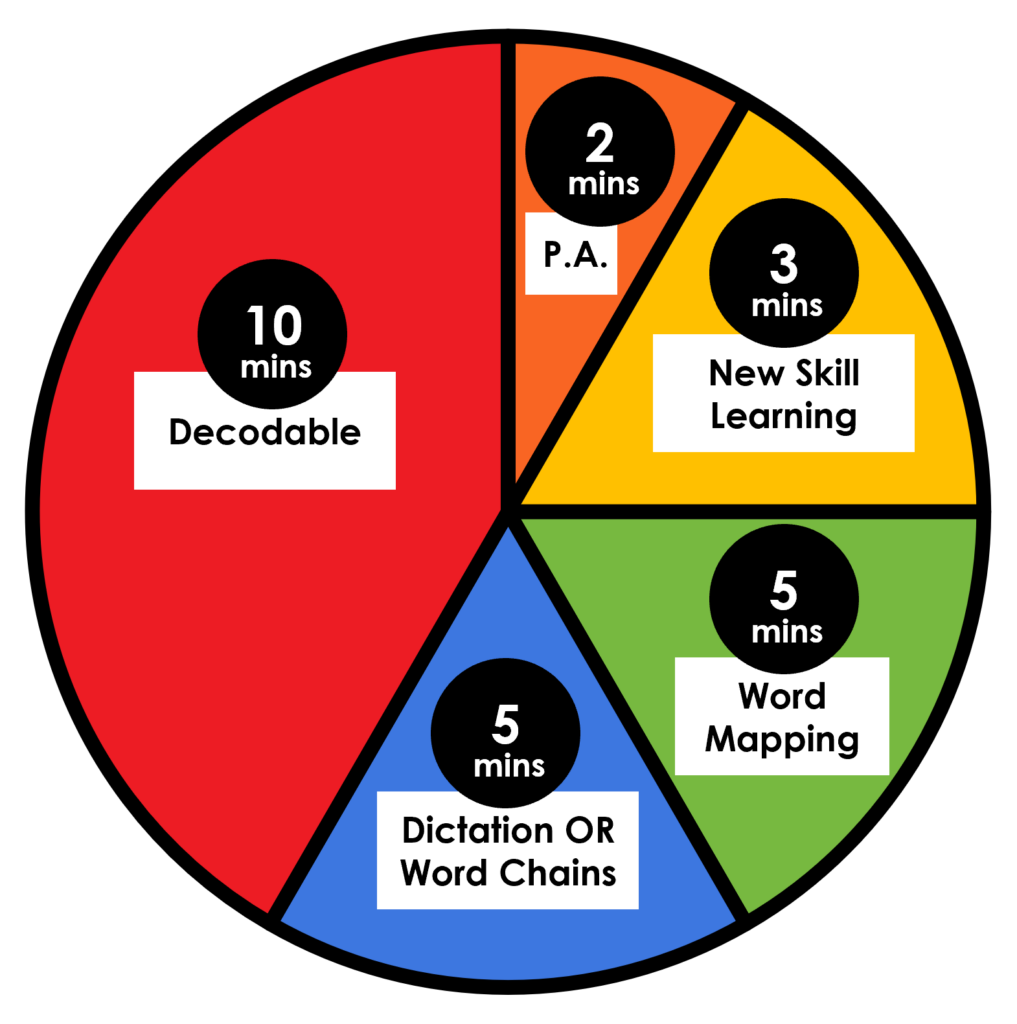
QUESTION: What if I cannot meet with every group every day?
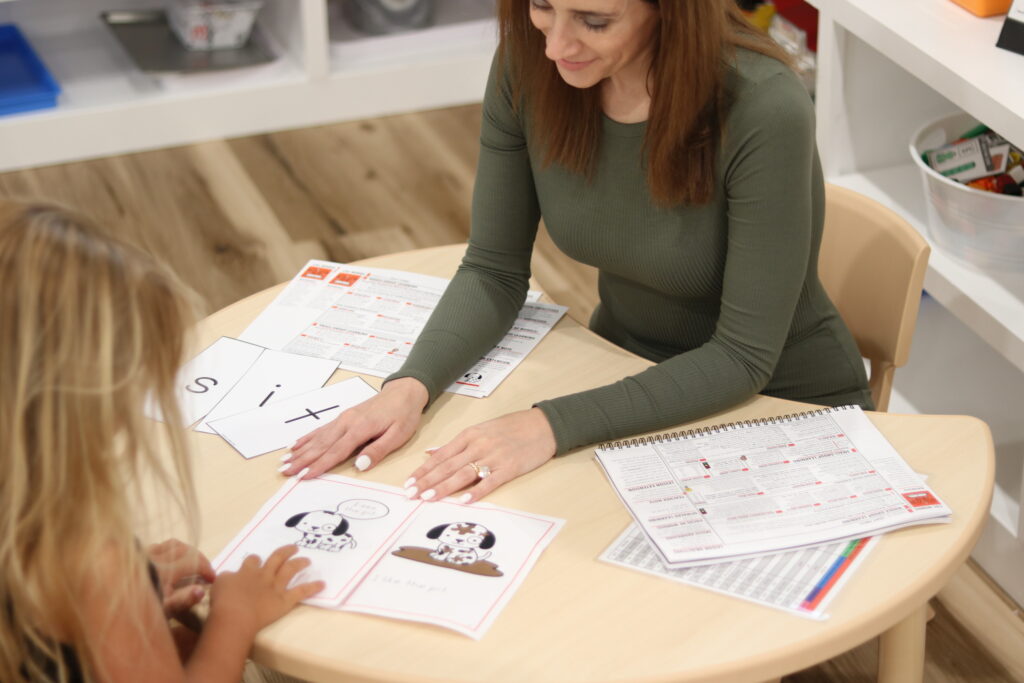
It is very possible that with limited time, you are unable to meet with every small-group each day. The great thing is the students are still getting a full lesson during whole-group phonics. As I pointed out in the two previous Q/As, the students will be getting the 5 essential components. All of those can be done whole-group. Also, keep in mind that each lesson is 2 days even for the whole-group group. Let’s take a look at a sample week.
Let’s say you have a class of 24 students. You have time for 2 15 minute groups each day and the 25 minute whole-group time as well. We will say that you have 4 reading groups with 6 students in each. You have 1 high group, 1 low group, and 2 on level groups. We shall name the on level groups on level 1 and on level 2.
Monday: All students take part in the whole-group phonics- Unit 2, Lesson 1, Day 1 For small-group time, your low group receive the small-group portion of the lesson on top of the whole group. On level 1 also gets the small-group lesson.
Tuesday: All students take part in the whole-group phonics- Unit 2, Lesson 1, Day 2. For small group time, you meet with your above readers and on level 2 group.
At this point, all students have received the whole-group learning for Unit 2, Lesson 1, Days 1-2. Each small-group has also received 1 day of learning from Unit 2, Lesson 1. (either day 1 or day 2.
On the following day, you would move on whole-group to the next lesson and repeat from above. During small-group you can keep with this same lesson 2 material, OR you can catch them up on their missed small-group lesson of day 1. Do not stress if you are not meeting with each group every day. There are ways to adapt, and thankfully you always have that strong whole-group lesson covering the essential 5 components.
QUESTION: Why are my students “choppy readers” in decodable books?
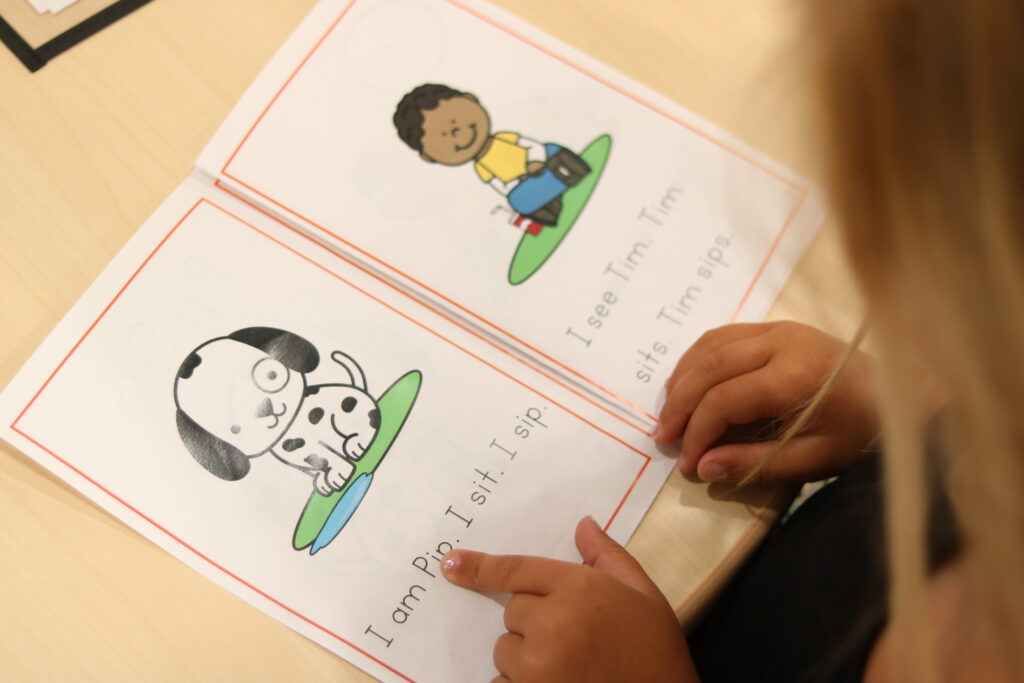
Teachers are worried. What is wrong with their students? Why are they reading so slooowww and choppy with decodables? Let’s explore this. Below is typed book from Guided Phonics.
I am Pip. I sit. I sip.
I see Tim. Tim sits. Tim sips.
I see the map.
I am at the pit.
I like the pit.
Here is a typed leveled guided reading book.
I see the peanuts.
I see the squirrel.
I see the chipmunk.
I see the monkey.
I see the raccoon.
I see the crow.
You most likely don’t need me to tell you why the first book will cause students to be more of a choppier read. The first book is completely decodable as students have been explicitly taught each of those sounds and high frequency words. However, the book does not follow a cutesy rhythm and flow. The book also doesn’t give students clues with obvious pictures.
The second book is very bouncy and fun to read. It’s cute and students will most certainly be successful at reading it if they use their picture clues and have a well developed vocabulary/understanding of images. My guess is you might get a few, “I see the bird” on the last page. This book will be easier to read no doubt. Honestly, a 2-3 year old can probably grab this book and read it after they hear you read it once. Are they reading? Yes. We do tell kids they are reading when they point to the McDonalds sign and state its name. However, this isn’t the type of reading we are looking to accomplish. This fun, bouncy reading will not get them where they need to be and when we take away those pictures in the upper grades. Yikes.
Do NOT be scared if your students are reading choppier in decodable books. They will build up their fluency over time. It takes practice. As they get more fluent in their high frequency words, individual sounds, and of course blending of sounds they will get quicker. They are working hard for each and every sound. Unlike with the guided reading books, where the whole word was given to them via a repeated pattern or the picture.
Teaching students to keep their eyes on the words within the book will help their fluency and speed as well. Take a look at the next Q/A for more on that.
QUESTION: Do you offer reading strategy posters in Guided Phonics?
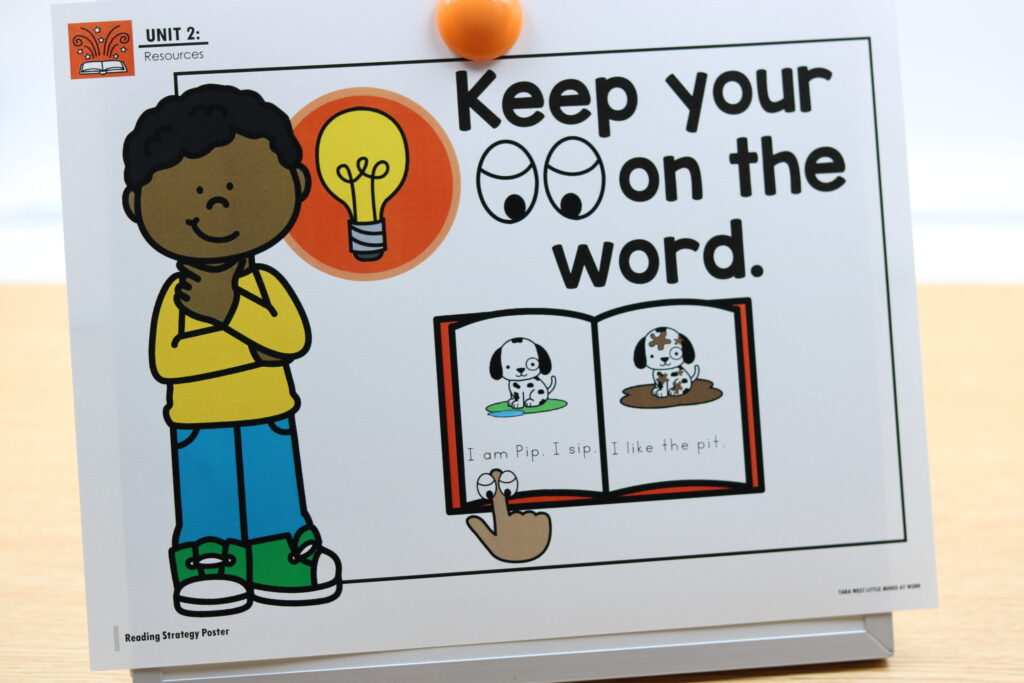
I am often asked if I include “reading strategy” posters, cards, or bookmarks within my Guided Phonics program. The answer is actually a no. I chose not to include any of those items within my program because there is only ONE strategy I want students to know, practice, and apply. That is to keep their eyes on the word/text/sound/book (have your choice). We have lived through the years of the beanie baby strategies and even though they were cute they really didn’t have much of an impact on our students. For my students, any time I’d point to a poster, card, or bookmark… their eyes would LEAVE the text. After showing them or even verbally reminding them of the reading strategy they oftentimes lost their reading spot and had to start over again, only to get to that word again and still struggle.
Linda Farrell has an amazing article on why it is vitally important to pull away from stating “good job” and/or giving approval to students as they look up to you to make sure they are correct. She writes about having students practice keeping their eyes on the text. It does take a lot of practice and for some students it might be a hard habit to break. Read up on her article HERE.
However, I do understand that oftentimes a visual for a strategy is sometimes helpful to students so I did create this free download poster for you to teach the skill with. I just ask that it’s something you remove when it’s time for reading. This way students do not allow their eyes to venture towards this poster. After all, we want their eyes on the TEXT.
QUESTION: What are heart words and do I need to use them?

Yes, it is true. Education is filled with all kinds of new buzz words and gadgets. Some teachers get a little eeeek if there is a lot of new information to take in. What is it? Why do I need to use it? Do I have to use it? Can I just use what I already have instead? In short, heart words is a METHOD of learning irregular high frequency words. Irregular meaning not all of the sounds in the word “follow the rules” as most students know them. However, heart words doesn’t label the ENTIRE word as a rule breaker. Instead, we focus on just the individual sounds that need to be memorized by heart. For example, in said we hear the /s/ and /d/ just fine so those are not heart sounds. Only the ai making the /e/ sound must be memorized by heart.
QUESTION: What units should I be covering for my grade level?
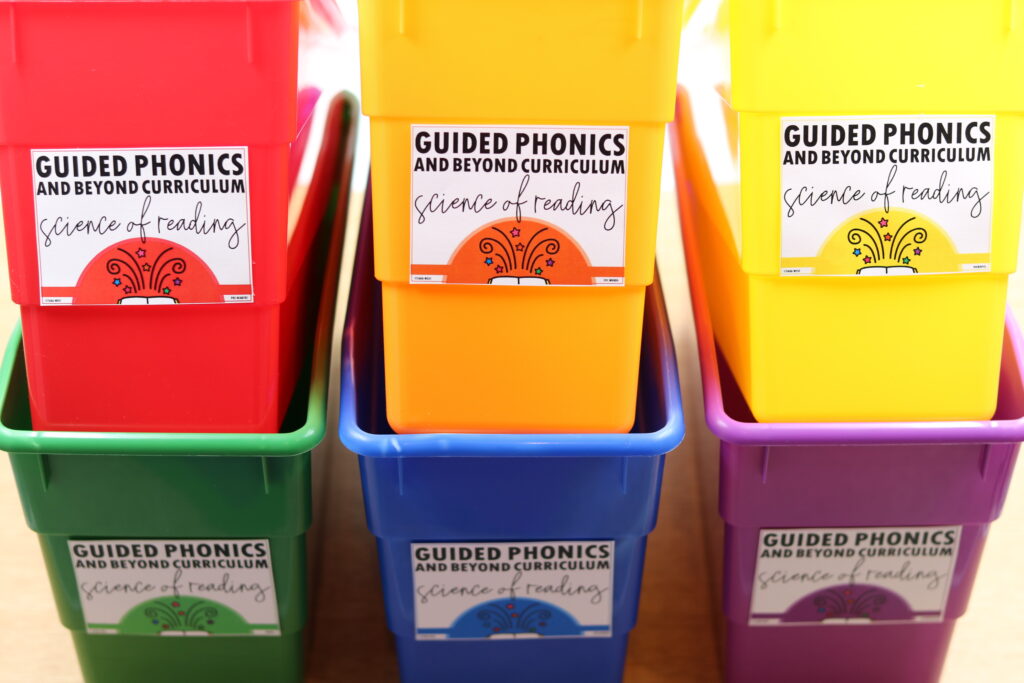
This question can vary greatly so please don’t think you MUST complete the suggested units below. This is a general overview.
- Preschool (as students that are NOT going to K the next school year): Preschool students can take part in Unit 1 of Guided Phonics in a modified approach. You will be spending much longer per letter than the suggested 1 letter per day approach.
- Pre-K (as students ARE going to K the next school year): This can vary according to your student body. However, it’s possible the your pre-k students can get through the alphabet by winter/early spring and move into Unit 2 of Guided Phonics. These sounds would need a solid foundation in both phonemic awareness and their letter sounds.
- Kindergarten: If following a school year of 170-180 days, your students will be able to complete units 1-4. That is 175 academic days.
- First Grade: Students will complete units 2+. First grade can vary on the level of your students. Each unit is designed to be 50 academic days. However, in first grade you will need to work through the units at some points with 1 lesson per day making each units 25 days. Take your school calendar and determine how many days you can dedicate to phonics/small group. Work with that number to narrow down the units. You can eliminate lessons and/or swap to 1 day per lesson instead of 2.
- Second Grade: Units 2+ and following similar to the above state. If your students start the year of needing a review in CVC words you would a very fast paced review in Unit 2. Possibly 2-3 weeks. Again, look at your district pacing of days and skills required to cover. Mark up my scope and sequence, eliminating lessons that you cannot fit in.
Do not feel scared to skip repeated lessons. For example, if we are learning th and I cover it for 2 lessons, that is 4 academic days. It’s okay to skip that second day of th OR that second lesson. I have built in review days for spiraling skills as well so they will have multiple opportunities with those skills.
On the opposite end of that, do not feel scared to SLOW the units down. You will know your students the best. There are lessons that tend to be a bit more meaty and might need additional days spent on them. For example, Lesson 1 of Unit 2 is extremely meaty in order to give students a starting base in sounds and high frequency words. Extend lessons when needed and skip lessons when needed. You can always reach out to me and explain your situation so that I can offer tailored support as well.
QUESTION: Where do I find the resources in my download? What about the assessments?
I get this question a lot! I want to make sure that you know how to navigate the Guided Phonics Bundle. First off, until you are very knowledgeable in a particular unit, you want to stay OUT of it’s folder. The folder is only to be used for quick printing. For example, you’re making worksheets for an entire unit. You can go into the folder to print all of the worksheets in one click.
However, if you are only accessing the folder material, you are missing out on A LOT. When you first go to teach a unit, you want to be in the LARGE 600+ page PDF files. These are NOT found within the folders. These are the PDF files outside of the folders. Below you can see what this looks like on a PC and a MAC.
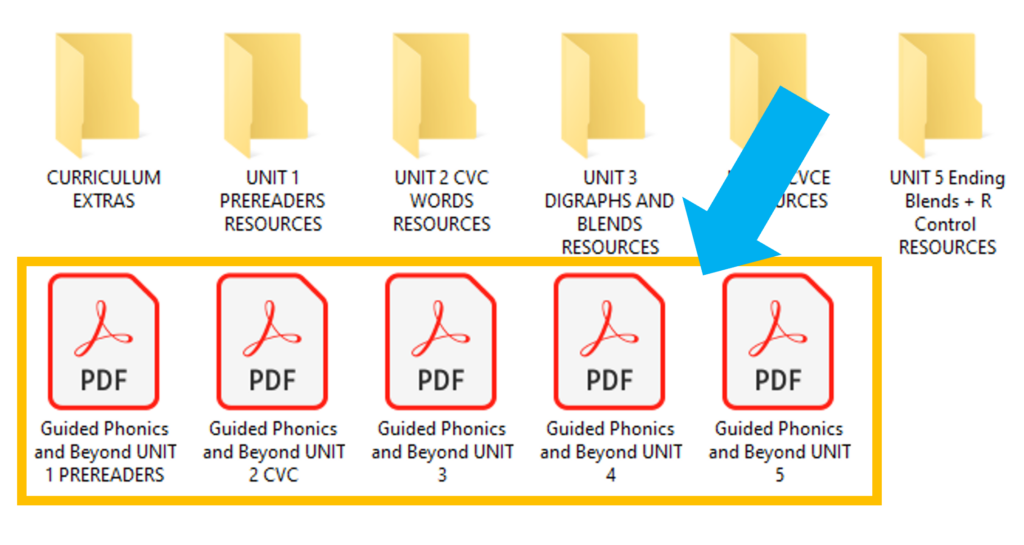
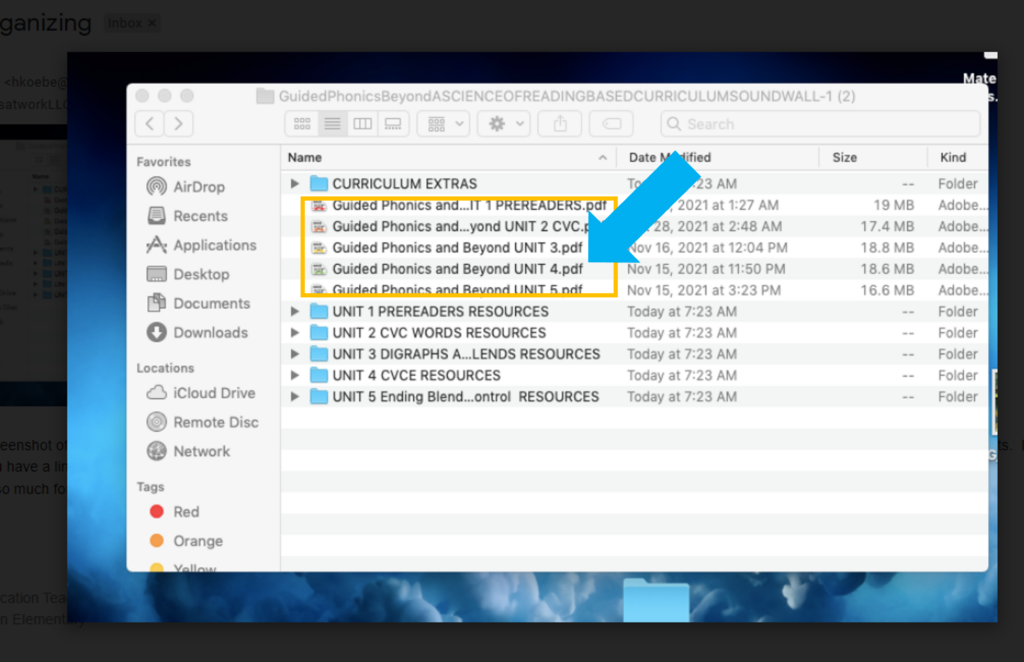
Please open those PDFs to get acquainted with each unit. You will find my visual overview, unit scope, all unit resources (sound cards, heart word cards), assessments, and any additional unit extras that are needed.
QUESTIONS: Do you have a Guided Phonics master book list?
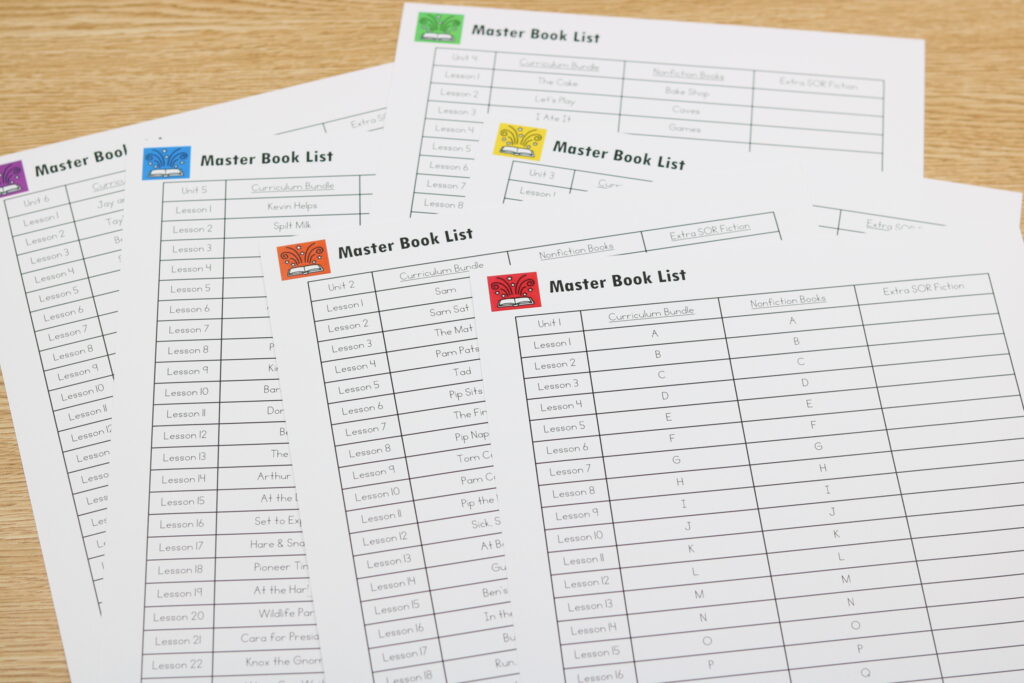
Yes! You can download a Guided Phonics + Beyond master book list HERE. This booklist will combine the Guided Phonics curriculum books, the nonfiction decodables, and the “extra” SOR decodables. All three of these contain different decodables. However, they all follow the same scope and sequence! This list will be updated as the nonfiction readers for unit 6 are released and the “extra” fiction readers for units 4-6.

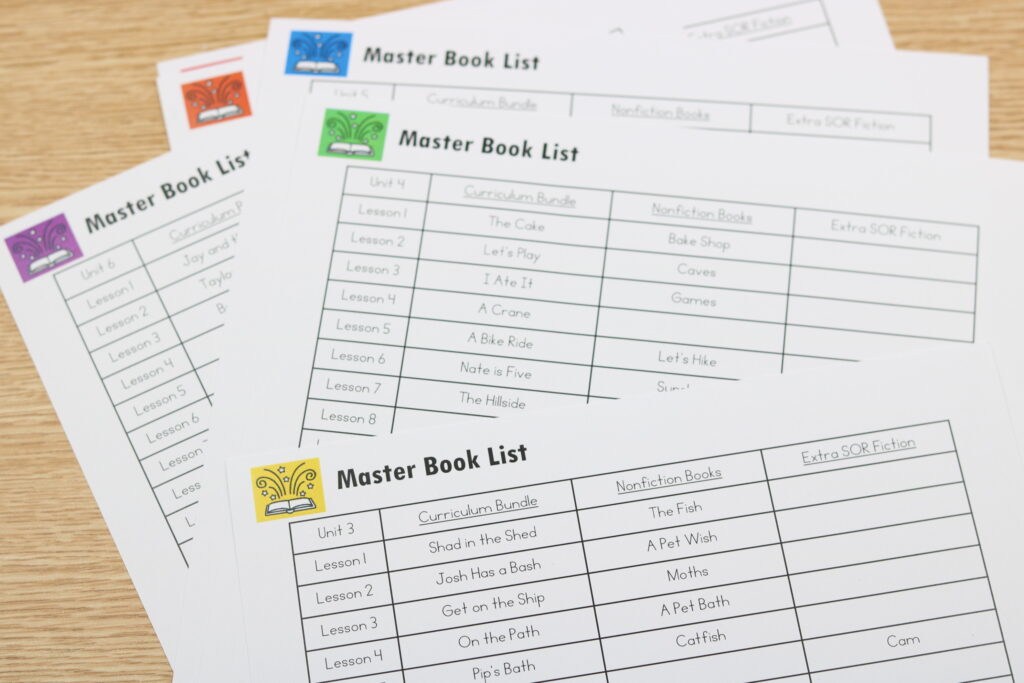
QUESTION: How do I use the unit if I’m on limited printing?
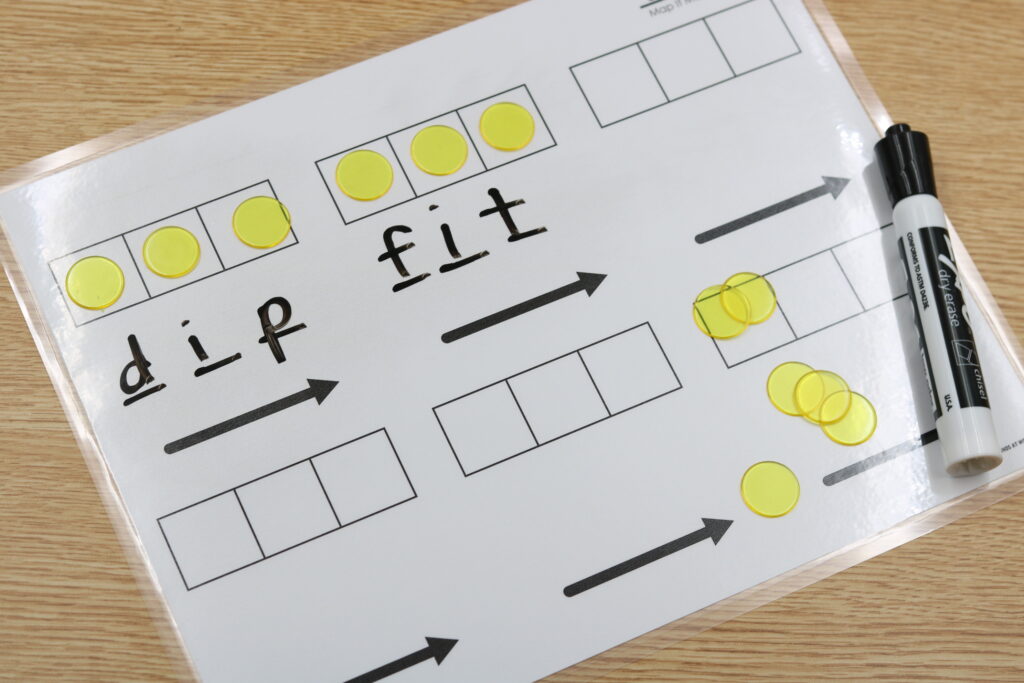
This is a very valid question! First off, let’s stay focused on those 5 essential components that we discussed above in the blog post. Sure, I have of awesome additional components in the unit like all-in-one decoding mats or home connection worksheets. However, those are supplemental to the lessons and will not impact your success of the units if you’re unable to use them.
- ESSENTIAL COMPONENT #1: Phonemic Awareness As we discussed, this component is done orally and does not require printing.
- ESSENTIAL COMPONENT #2: New Skilled Learning This component is also completed orally. However, you most likely will want to have printed 1 set of sound cards. I offer multiple sized within the unit but you need only 1 set. You will also want 1 set of high frequency word cards printed or written onto index cards.
- ESSENTIAL COMPONENTS #3-4: Orthographic Mapping and Dictation You do have options for this component to lower printing. First off, if you choose to print the map it mat from the unit, you will use the SAME mat all unit which makes the printing worth it. You can also print the map it mat double sided with the dictation mat to really extend the use of that printing. You can also choose to use a whiteboard which would require not printing.
- ESSENTIAL COMPONENT #5: Decodable This will be the biggest impact of all the 5 components. However, if you are unable to print the decodables, you can choose to use the all-in-one decodable sheet. This will lower your printing impact significantly. These would also work laminated and reused for multiple groups/multiple school years.
QUESTION: Do you have DIGITAL books?
Yes! I am happy to share that all of my SOR units now contain digital books for both Seesaw and Google Slides. These books were added around 12/23/21. If you downloaded prior to then you will just need to redownload. You will access the main unit PDFs and scroll to page 4. See a preview of accessing the digital books below!
QUESTION: Do you offer single-sided books?
Yes! This was highly requested and I’m happy to say that I do now offer double-sided readers and single-sided readers. The single-sided readers can be printed, cut down the middle, and double stapled on the side. These new books are located in each unit’s resource folder. See a preview of these books below!
QUESTION: Do you have detailed blog posts for each unit?
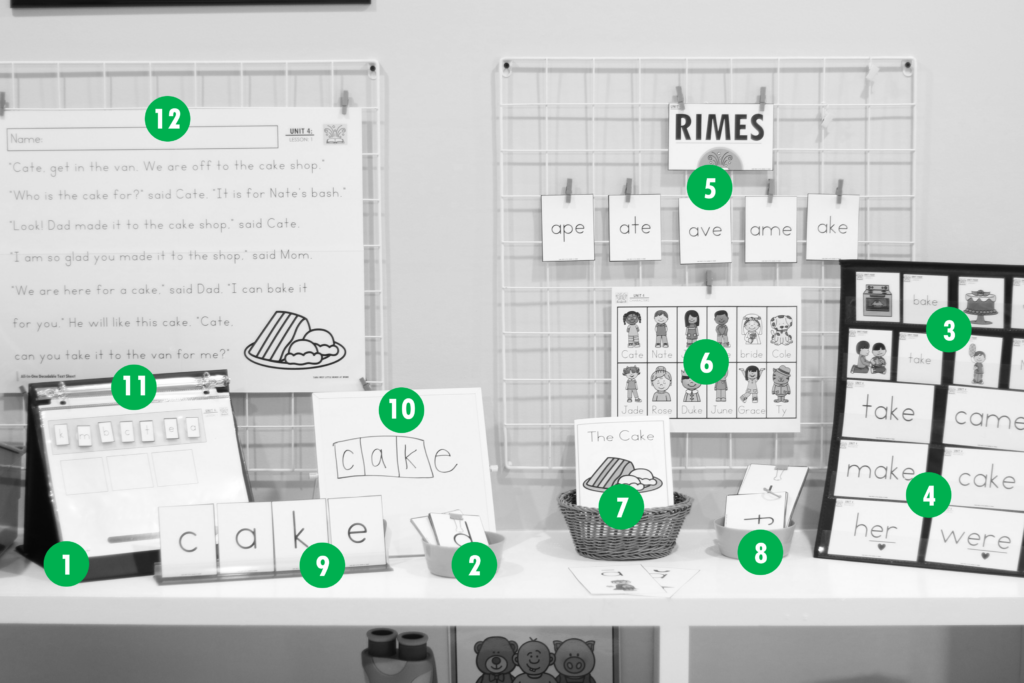
Yes! I have a blog post for each unit! You can find videos, detailed explanations, and even classroom set up examples like the image shown above. Below is a link to each blog post. Units 5-6 will be available soon.
UNIT 1 BLOG POST
UNIT 2 BLOG POST
UNIT 3 BLOG POST
UNIT 4 BLOG POST
QUESTION: Do you have detailed videos for each unit?
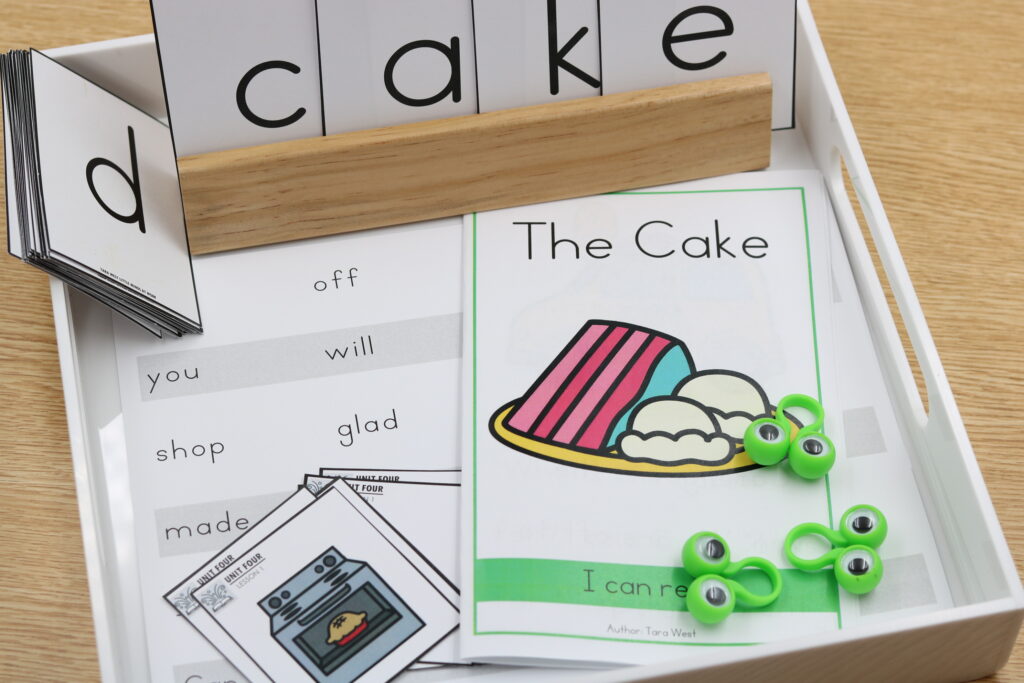
YES! Have you ever wondered what the sound cards look like or how to use the blending strips? I explain in detail, the lesson components, the lesson resources, and so much more in my detailed overview videos for each unit. It is vital to view these videos prior to starting each unit. View the videos linked below.
UNIT 1 DETAILED LESSON OVERVIEW VIDEO
UNIT 2 DETAILED LESSON OVERVIEW VIDEO
UNIT 3 DETAILED LESSON OVERVIEW VIDEO
UNIT 4 DETAILED LESSON OVERVIEW VIDEO
QUESTION: What unit do I start in the Guided Phonics program?
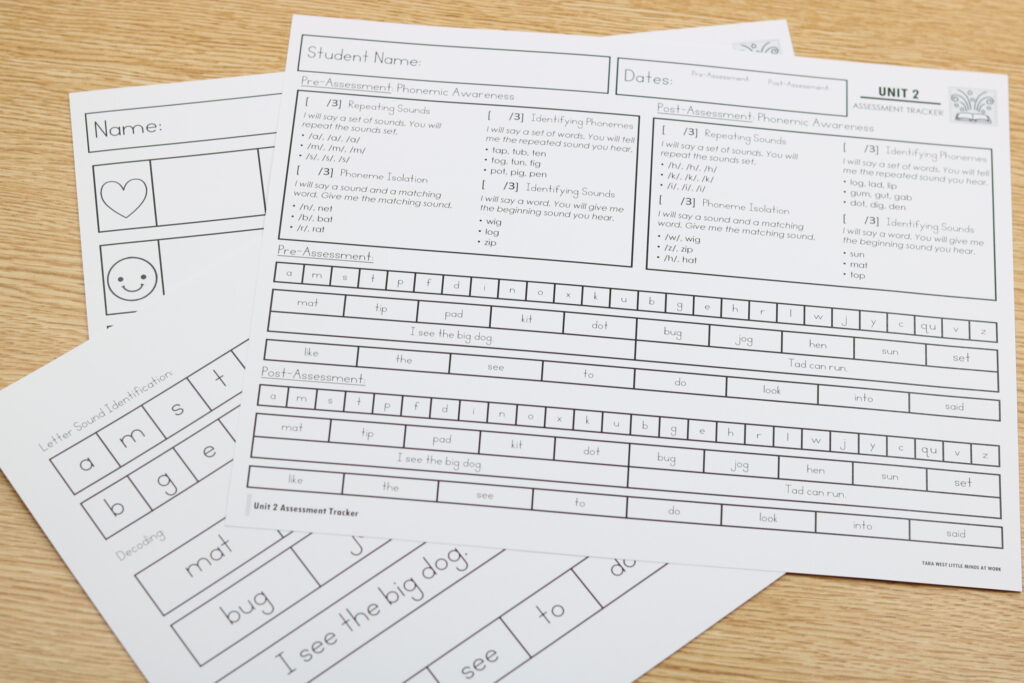
I get this question a lot and it’s not quite cut and paste for each teacher. First off, we have to remember that Guided Phonics is a curriculum based off of a phonics skill focus. This is much different than when we would plop our students into a leveled reading group. We would do our best to group our students into groups based off of their phonics and phonemic awareness levels. However, that didn’t always correlate to what they were “reading” per what we discussed earlier with the “crow vs bird” example.
In a classroom setting, all students will start in the same unit for whole-group. It is in small-group (or insert intervention/multi grade teachers) that it gets trickier. That when you’ll want to utilized the included assessments. I discuss how to administer the assessments in the next question so we will focus on how to use the data from those assessments in placing our students. Each unit comes with a pre-assessment and post-assessment. If you are unsure where a certain student/group would land for small-group you can give them a pre-assessment.
Keep in mind that you aren’t looking for 100% in order to start them in that unit. Think about students that know all of their sounds. They aren’t going to be 100% on CVC words and that’s okay. However, you want to make sure that the pre-assessment is not at a level that would be beyond frustration for the student(s). If the assessment is too hard, discontinue it and revert backwards by 1 unit.
You can always reach out to me with specifics and I’m happy to assist!
QUESTION: How do I give the assessment?
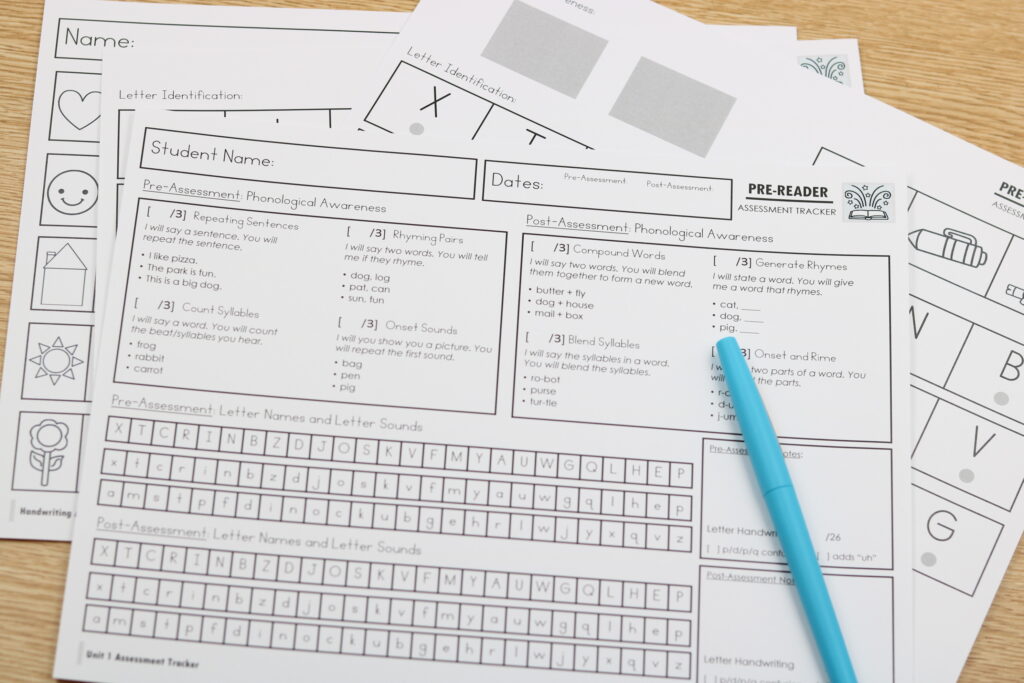
Each unit comes with an included pre-assessment and post-assessment. Prior to administering the assessments watch these overview videos for each unit. I walk you through how to administer the assessment.
UNIT 1 ASSESSMENT VIDEO and HERE
UNIT 2 ASSESSMENT VIDEO
UNIT 3 ASSESSMENT VIDEO
UNIT 4 ASSESSMENT VIDEO
BRAND NEW! Guided Phonics + Beyond Decoding Drills
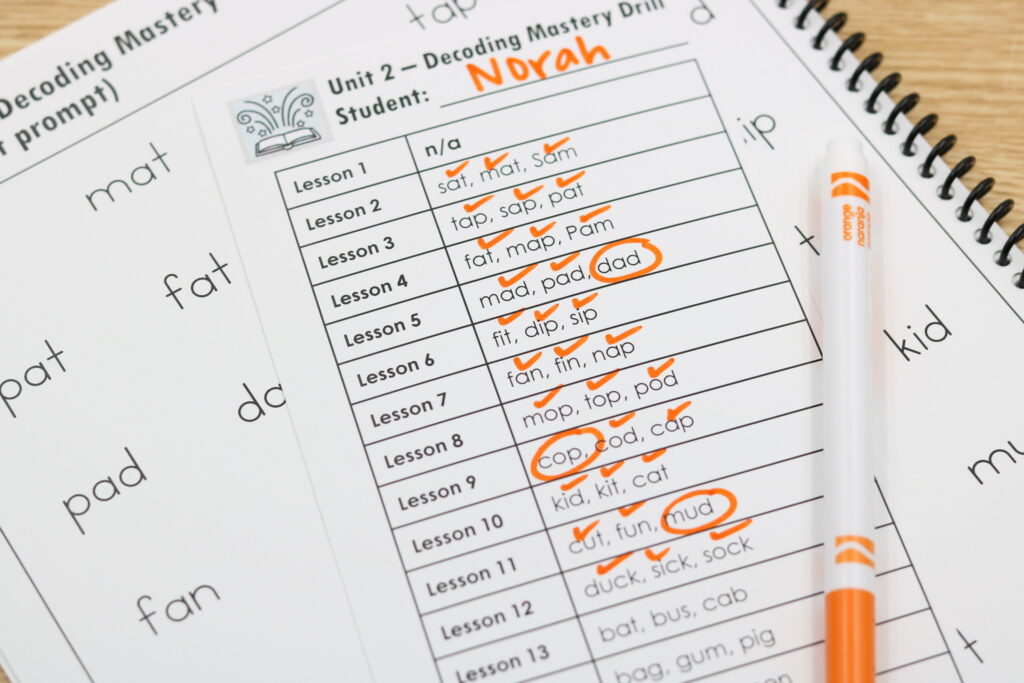
Thanks so much for viewing my free Guided Phonics + Beyond supplemental packet: Decoding Drill Mats packet. Please view this explicit and thorough explanation video for the Decoding Drill Mats packet HERE. The Guided Phonics and Beyond Curriculum includes 275 days of explicit and systematic lesson plans, decodables, embedded high frequency words, phonemic awareness, and more. View the comprehensive and science of reading aligned curriculum, Guided Phonics + Beyond HERE. Within this packet you will be able to assess students on decodable words out of context.
View a very comprehensive video about the decodable drill mats HERE.
Please read below in this post to acquire my Guided Phonics + Beyond Mastery Assessments if you haven’t yet downloaded those. They will pair 100% with these decodable drill mats.
Download the Decoding Mastery Drill mats HERE or by clicking the image below!
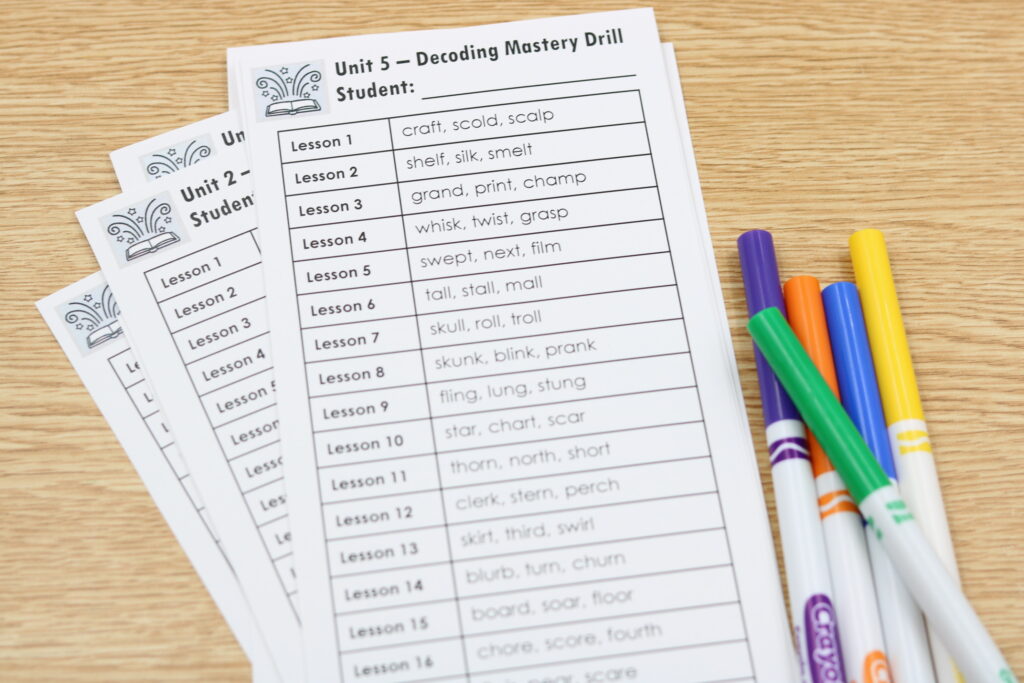
BRAND NEW! Guided Phonics + Beyond Mastery Assessments and Assessments Manual
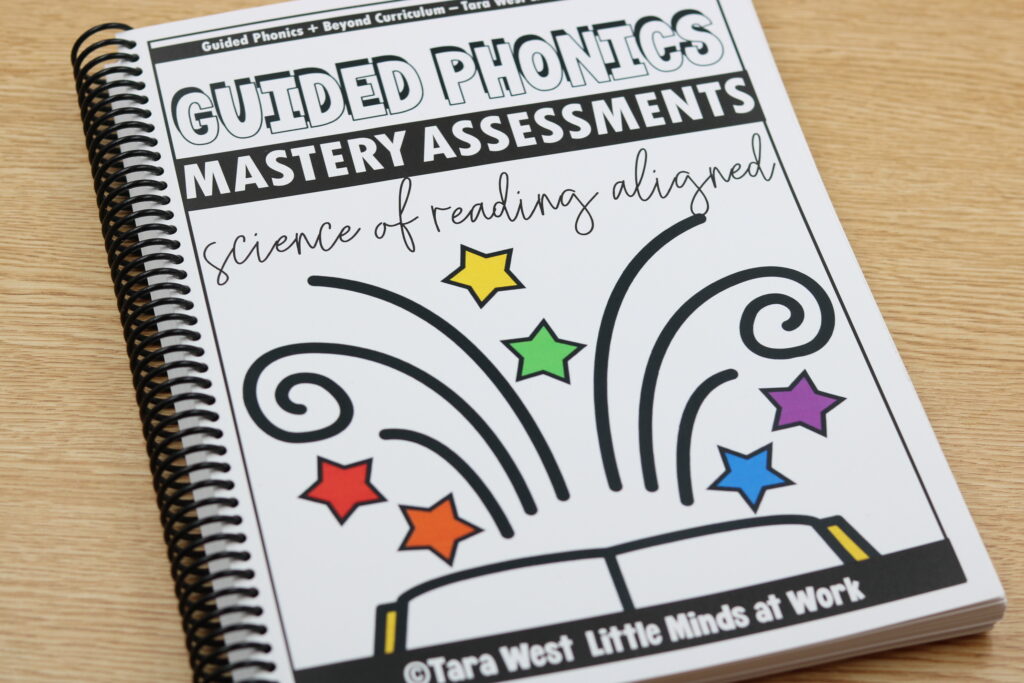
Assessments aren’t always the most exciting way to spend your classroom instructional time, but they are a valuable component to your students’ journey through the Guided Phonics + Beyond Curriculum. The curriculum currently contains unit based pre and post assessments. However, I felt that I could find an even more comprehensive way for the students to show their phonics ability, more data to accurately place the students into a unit, and a way to share their success with next year’s teacher and/or parents.
I have found a way to accomplish all of those goals using my newly released Guided Phonics + Beyond Mastery Assessments manual. In this manual you will be able to access the following key mastery assessment components:
- Grade Level Learning Continuums: View the Guided Phonics + Beyond scope and sequences across the K-2 grade levels.
- Grade Level Mastery Skill Lists: Specific skill lists for phonemic awareness and phonics over for the K-2 grade levels.
- High Frequency Words Scope and Sequence: Phonics-based decodable and irregular high frequency words for the K-2 grade levels.
- Unit Mastery Assessment Parameters: Overview of student observation and data driven phonics analysis for placing students in the Guided Phonics + Beyond Curriculum units.
- Unit Based Assessments, Student Recording Sheets, and Student Assessment Prompts: Phonics-based assessments aligned to the Guided Phonics + Beyond Curriculum.
- End of Unit Reflection Sheets: Reflection sheets that can be used to relay data to parents or the student’s end of year file (information for the following grade level).
View a very comprehensive video about the assessment manual HERE.
A skill overview sheet is included for parents/guardians as well.
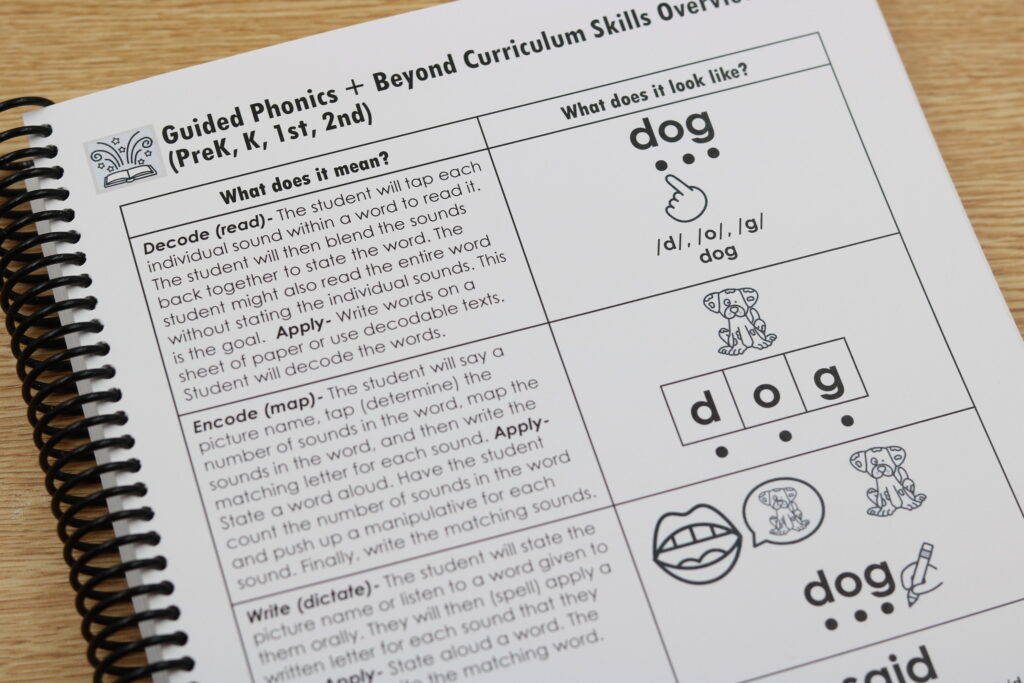
ACCESS THE FREE ASSESSMENT MANUAL: You can access the free Guided Phonics + Beyond Assessment manual by clicking HERE or on the image below. If you have any questions please reach out to me at li******************@gm***.com
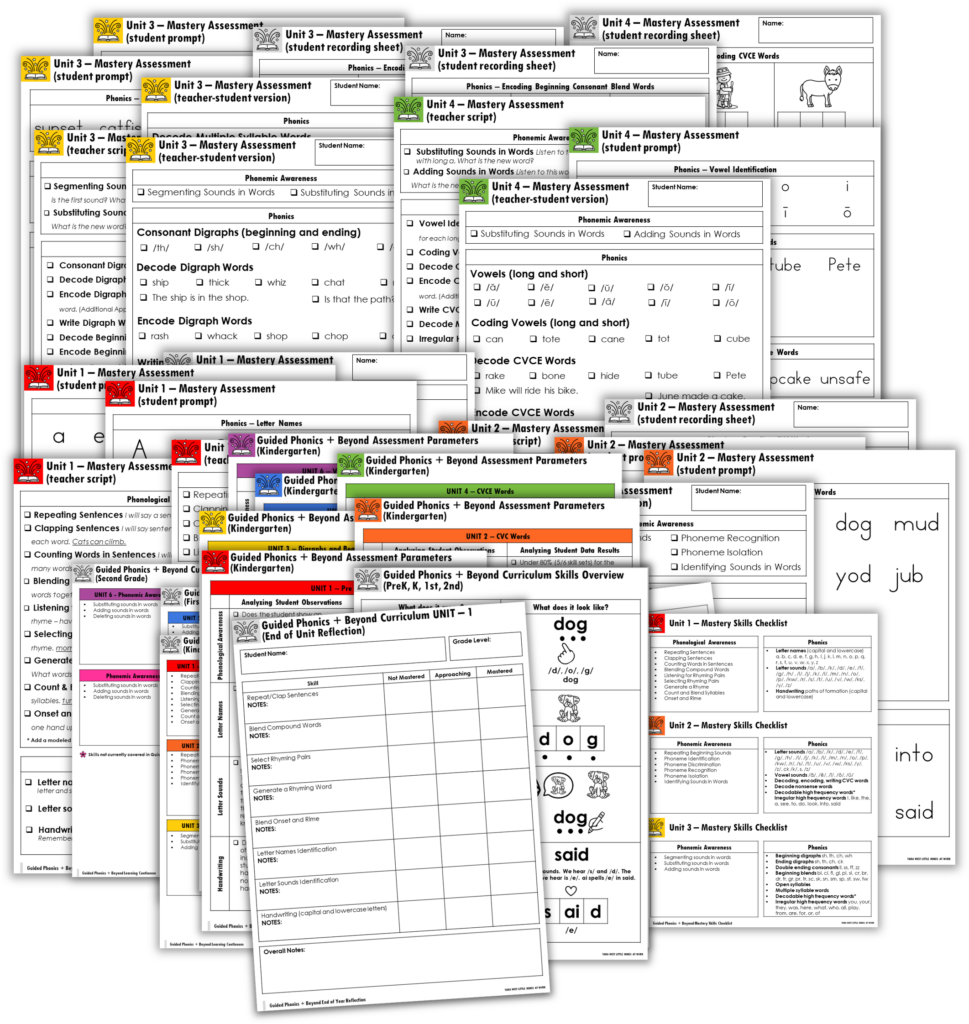
QUESTION: Okay, now how do I actually start?
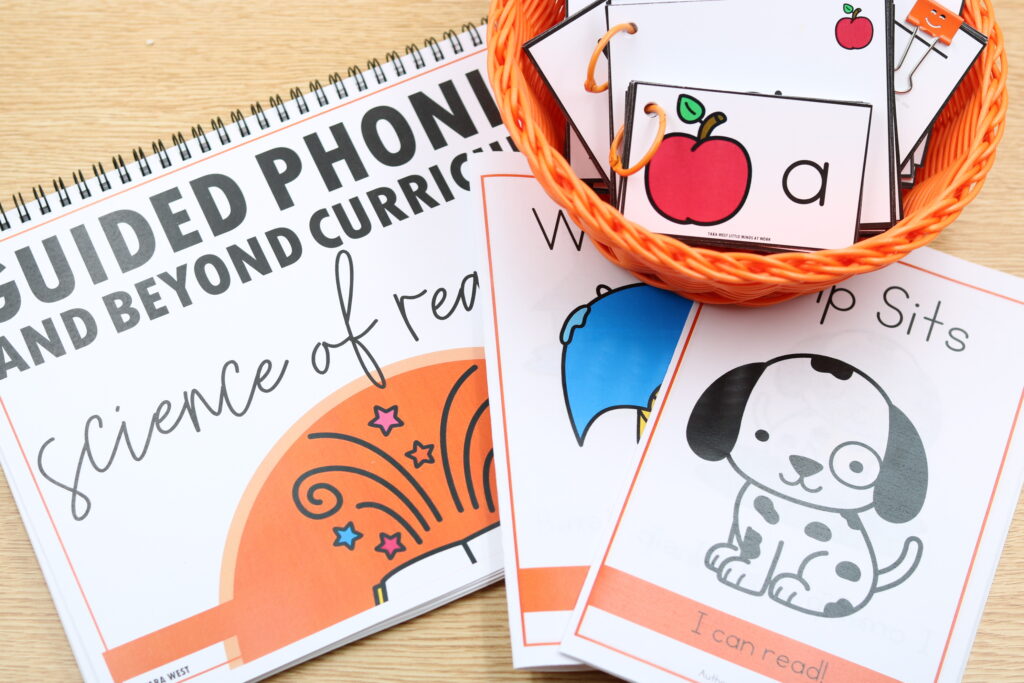
We will base this question off of Unit 2 but all units would be very similar. If you are ready to start Unit 2 follow these following steps.
- Start with the lesson plan overview video to get a visual of the entire unit HERE.
- Print the lesson plans. Read through them with a highlighter, post it notes, etc.
- Print unit resource cards. This would be: high frequency cards, sound cards, and letter cards. This is shown in the video above.
- Start with prepping the first 3-5 lessons. I would start with the Essential 5. These are discussed above in the post.
If you following the 4 steps above it will require very little printing and prep should be >20 minutes. You need only: your printed lesson plans, whiteboards, the book OR decodable sheet printed. That’s it.
As teachers, we want to print and prep and entire unit. If you have the time to do it’s an a-okay idea. However, if you are limited on time and resources, I suggest that you take it slower and prep a few lessons at a time. This will also help you to not print/prep too much or too little. You can adjust as you go and get more comfortable with the unit.
QUESTION: How can I organize the units?
I have several images below to show you how your fellow teachers have chosen to organize their Guided Phonics and Beyond Curriculum.
“For unit 2 the left side holds day 1 small group and the right side holds day 2. I like to keep the cards in baggies in my small group cart. For the word chain mats, I decided to print front to back and put them all in a sheet protector. Then I’ll just flip the page over and have students take magnetic letters from a cookie sheet and place them on top. The map it mat and dictation mat are printed front to back.” -Micheyla
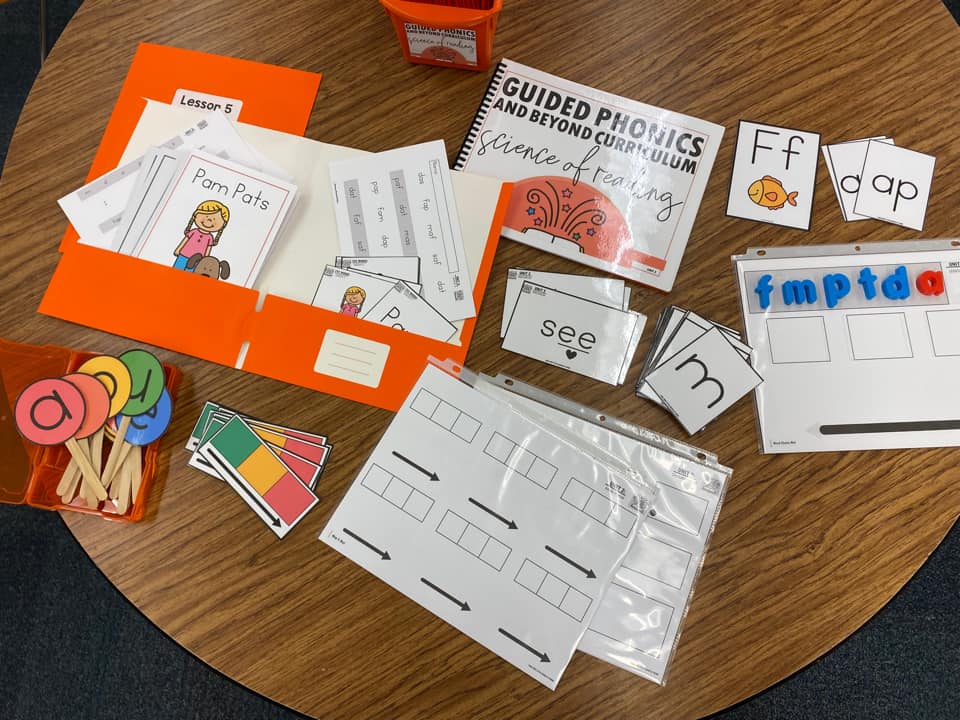
I’ve been doing my reading groups on the carpet so we can distance a bit more. I love this cart to keep everything organized so I can grab what I need and keep each of my 3 groups organized. My first graders are working in units 2, 3 and 4. We have required curriculums for our tier 1 instruction, but I love how this program so easily compliments those programs and provides SO many opportunities for students to apply the skills in context through reading decodable books. -Kristen
-Corrie
QUESTION: Do you have organizational labels?
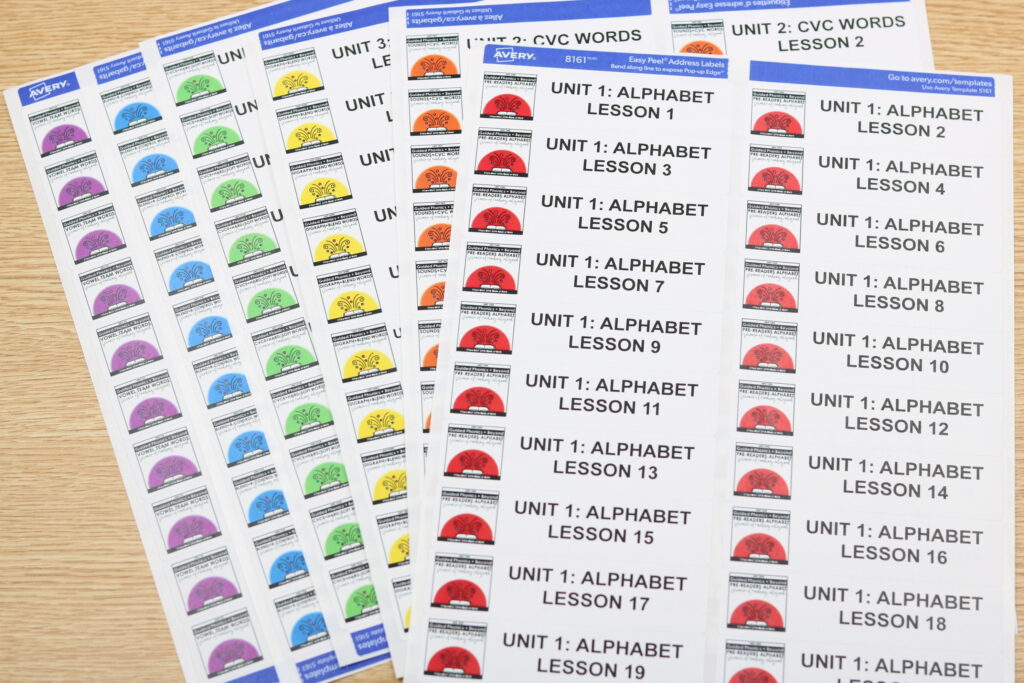
Download free labels for all 6 units. These labels are formatted to AVERY 8161. View those on Amazon HERE! I personally got mine in store at Staples. Download each unit below. If the direct download option does not work for you, click on the Google hosted links below. After downloading, the print window does auto pop-up.
If you have download issues with the links above, please use the Google hosted links below. Be sure to click the white download arrow in the upper right hand corner. You will want to make sure that the file is opened in Adobe Reader to make sure the labels print properly.
- UNIT 1 LABELS GOOGLE HOSTED (download and open in Adobe)
- UNIT 2 LABELS GOOGLE HOSTED (download and open in Adobe)
- UNIT 3 LABELS GOOGLE HOSTED (download and open in Adobe)
- UNIT 4 LABELS GOOGLE HOSTED (download and open in Adobe)
- UNIT 5 LABELS GOOGLE HOSTED (download and open in Adobe)
- UNIT 6 LABELS GOOGLE HOSTED (download and open in Adobe)
QUESTION: What additional Science of Reading Freebies do you have?

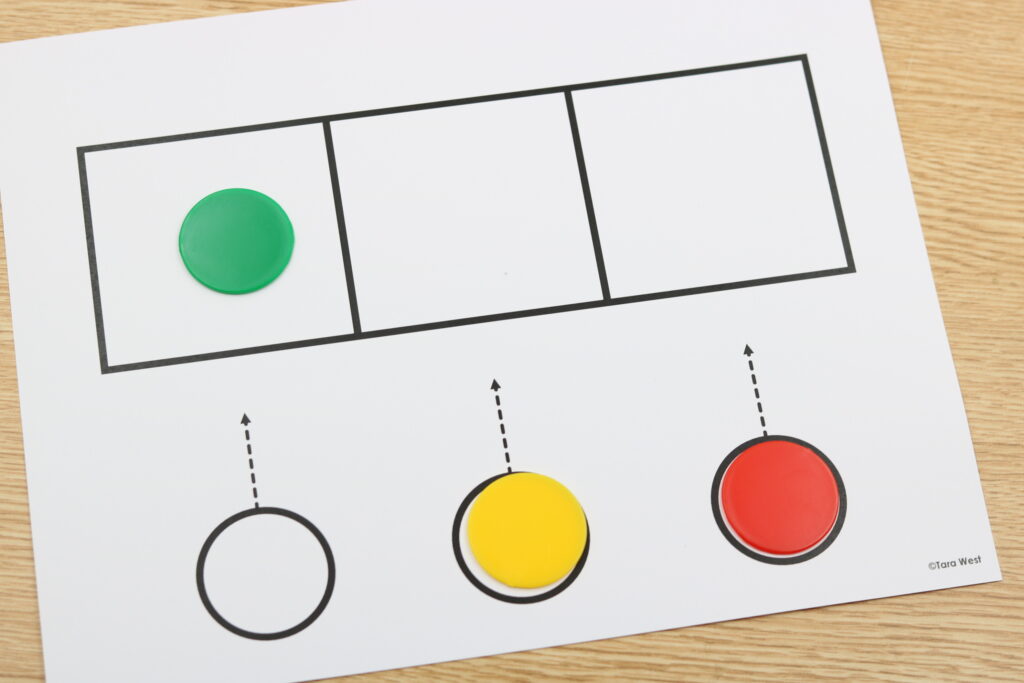
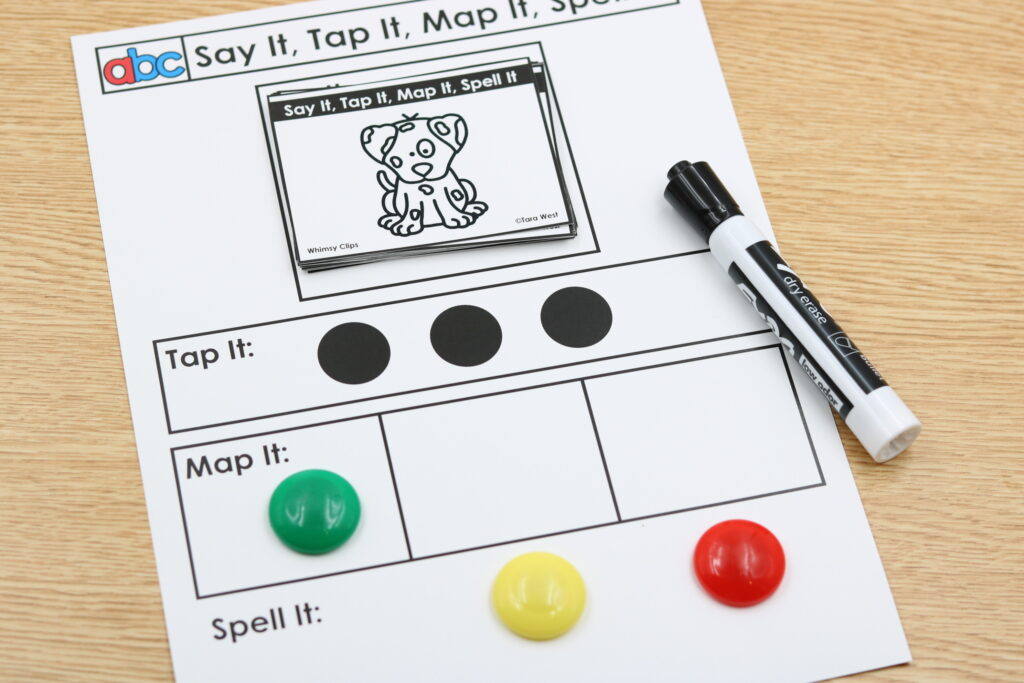
You can access these three free Science of Reading downloads on THIS blog post.
QUESTION: How can I use the Guided Phonics Curriculum in a Virtual Setting?
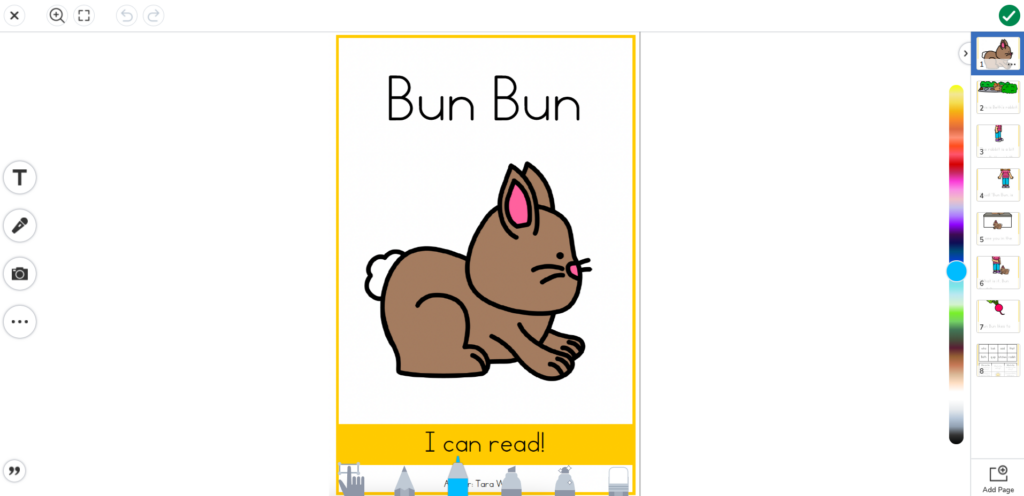
Along with the newly added digital readers to Seesaw and Google Slides, you can also watch this very detailed how-to video. In THIS video I will walk you through how to take the PDF curriculum and add it into Seesaw and/or Google Slides. View the how-to video below.
Quick Tips: When using a PC you can use the snipping tool or use the keyboard shortcut SHIFT + WINDOWS KEY + S
On a MAC use SHIFT + COMMAND + 3 or SHIFT + COMMAND + 4
QUESTION: Do you have word lists that match to the Guided Phonics + Beyond Curriculum?
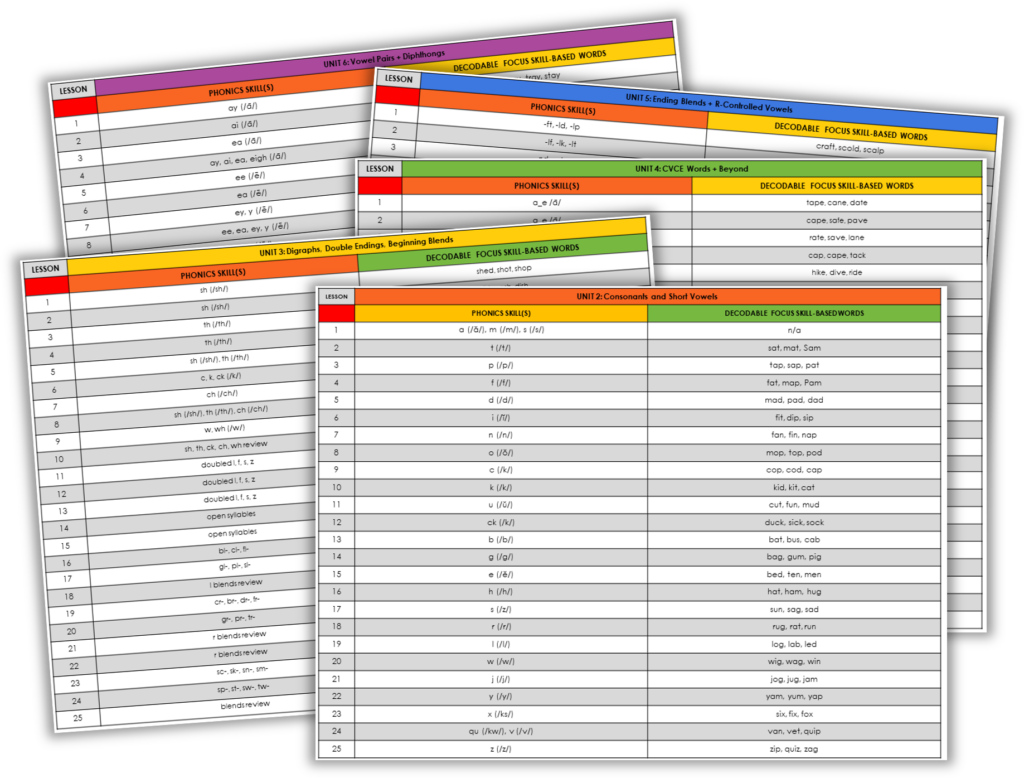
Yes! I have word lists that match to the curriculum. These word lists can be used for dictation practice, decoding, encoding, or for “spelling” practice. These word lists will match the Guided Phonics + Beyond Curriculum scope 100%. Download the word lists HERE.
QUESTION: Do you have a visual overview for the skills in each unit?
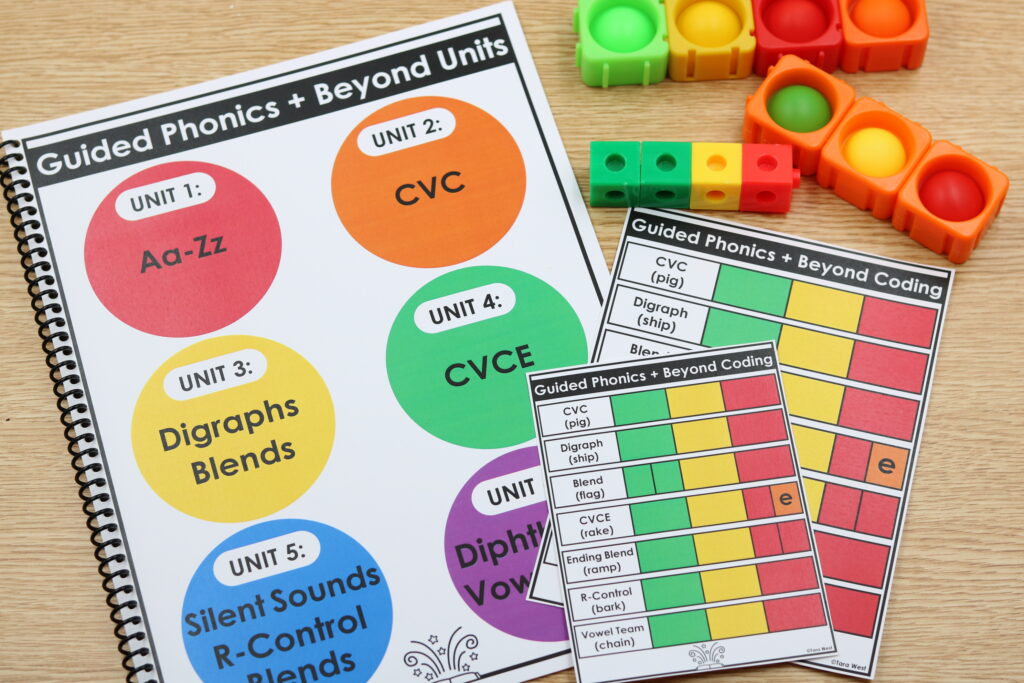
Yes, you can download this free visual overview HERE. You will also find a visual for how I code my sounds in each word. This coding is consistent throughout all of my programs/supplements.
QUESTION: What if I have additional questions about Science of Reading or the Guided Phonics Curriculum?
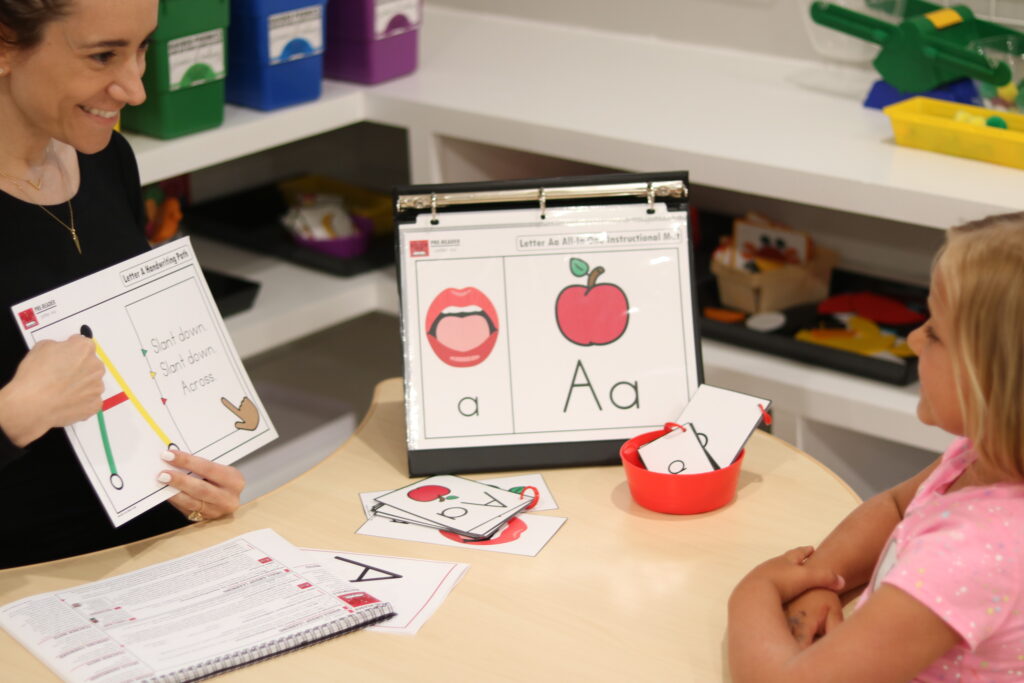
If you have any additional questions, feel free to reach out to me via email: litt****************@gm***.com

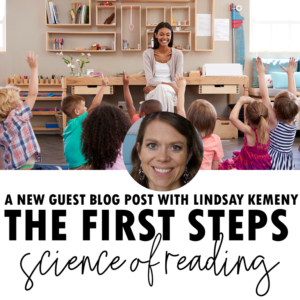
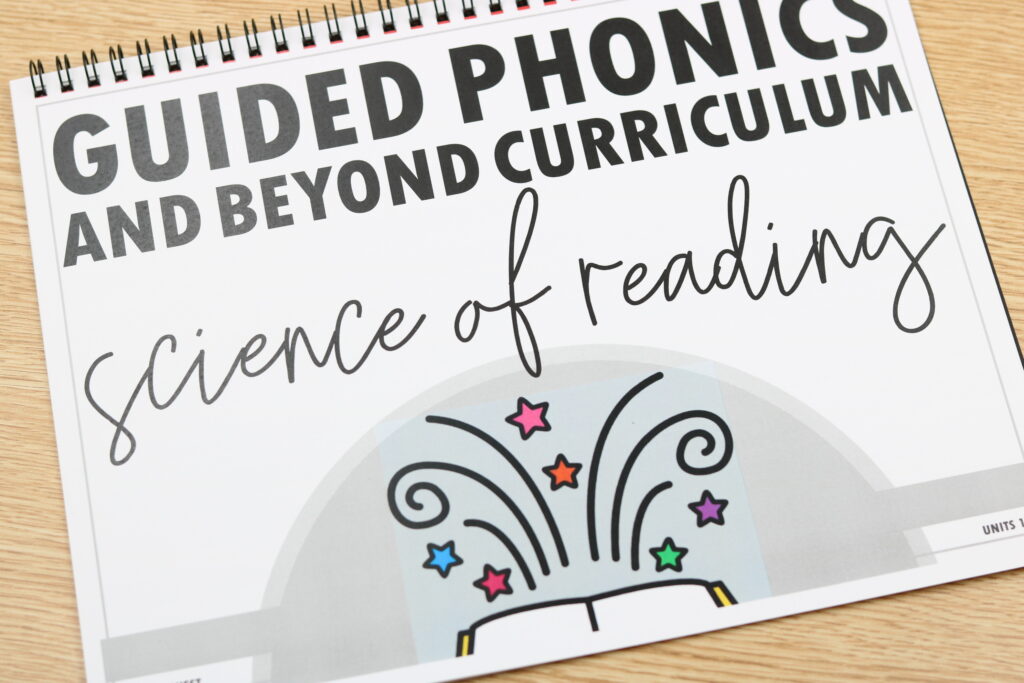
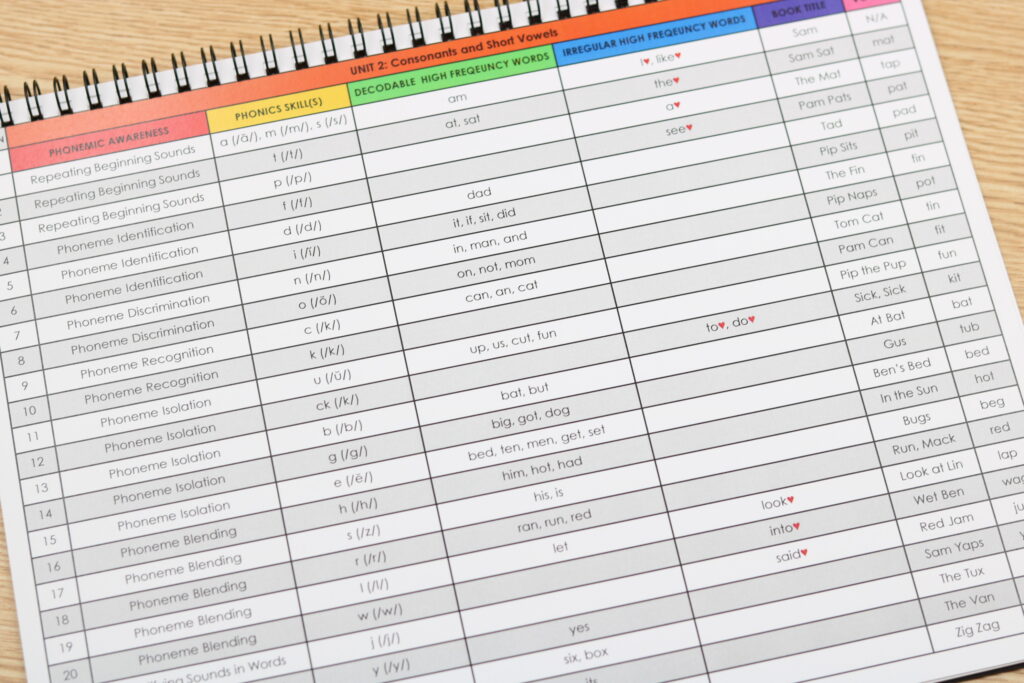
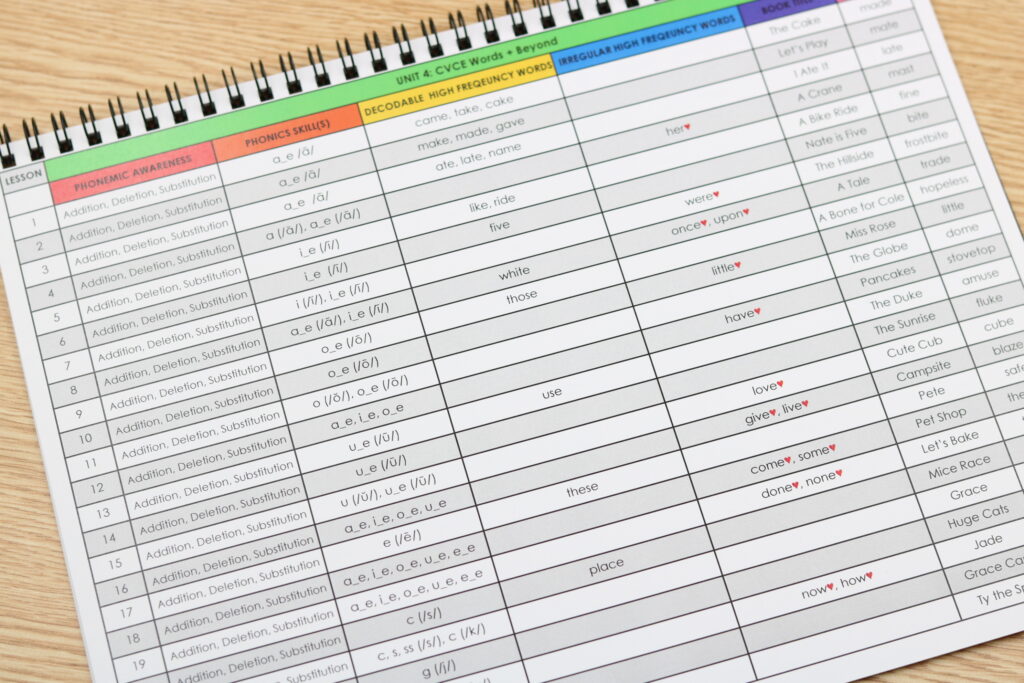
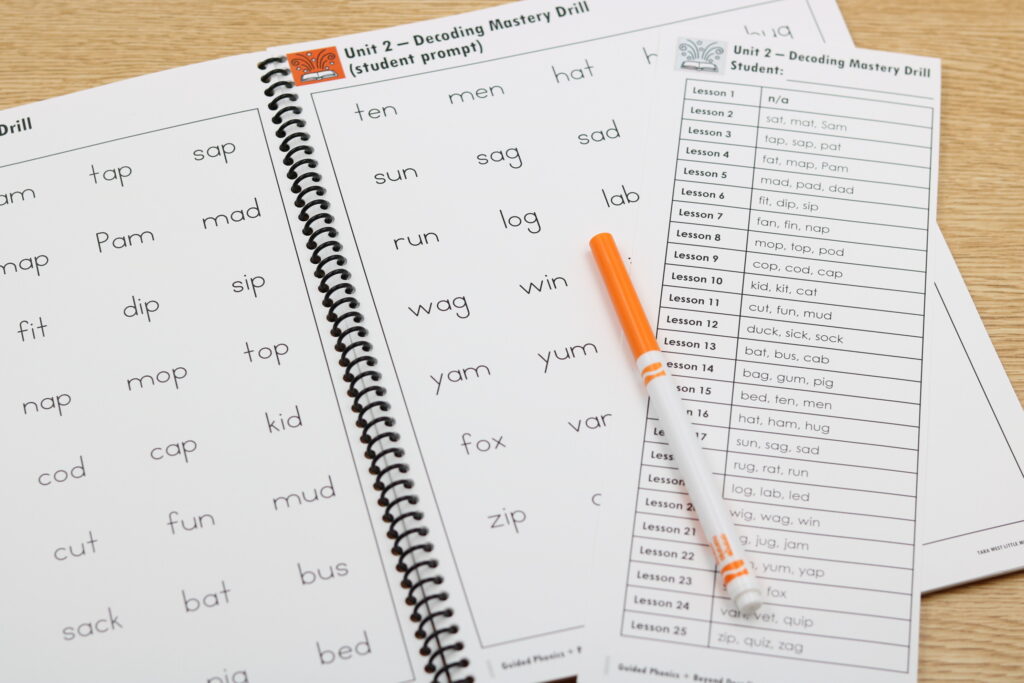
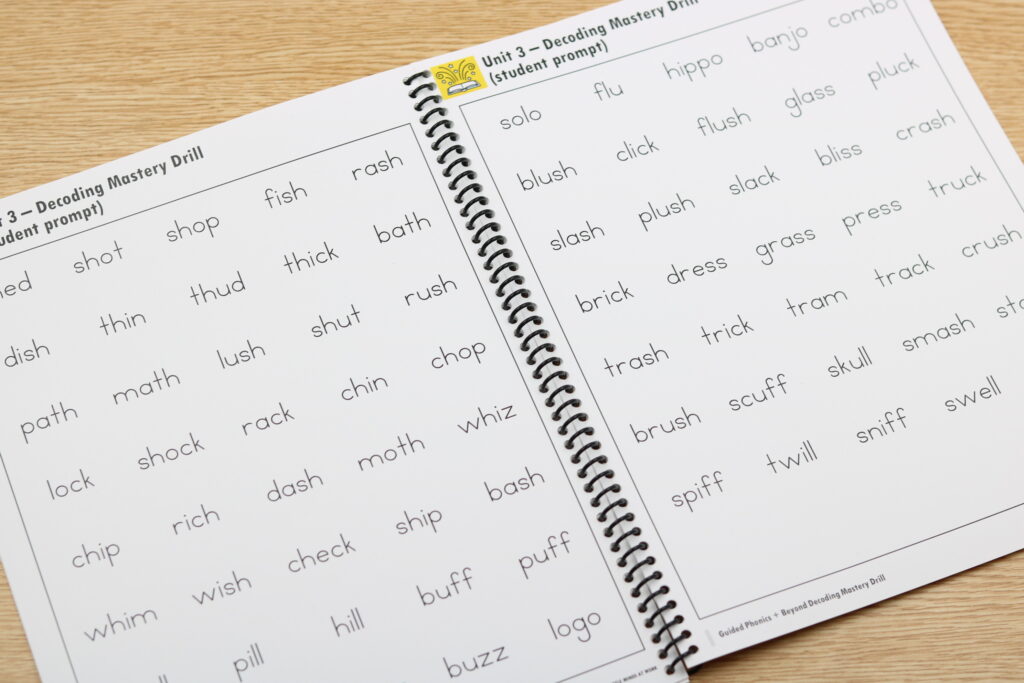
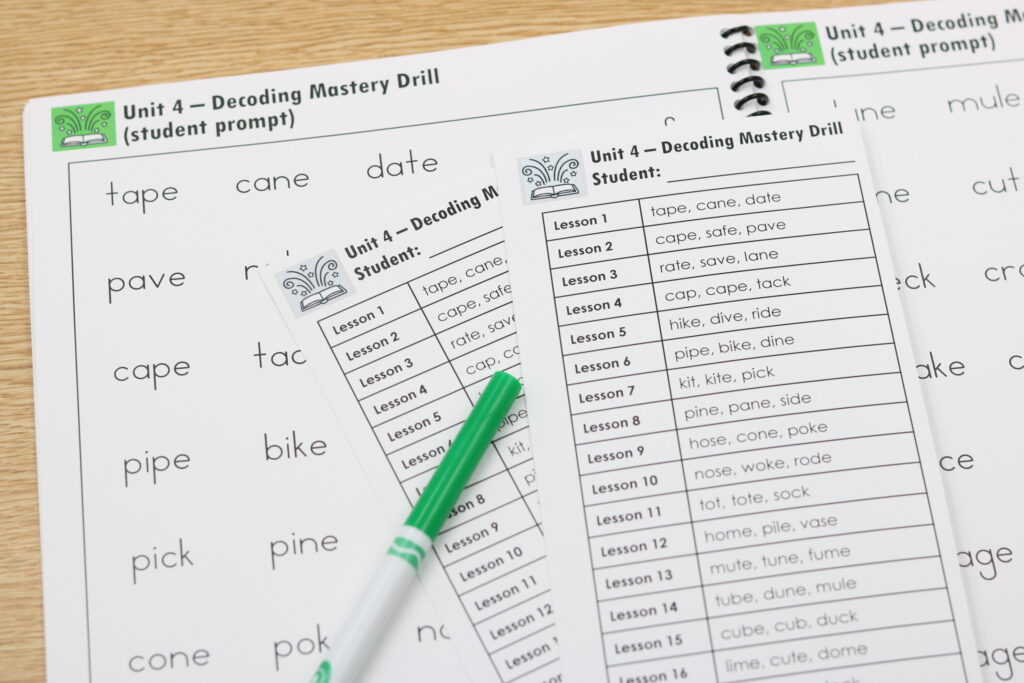
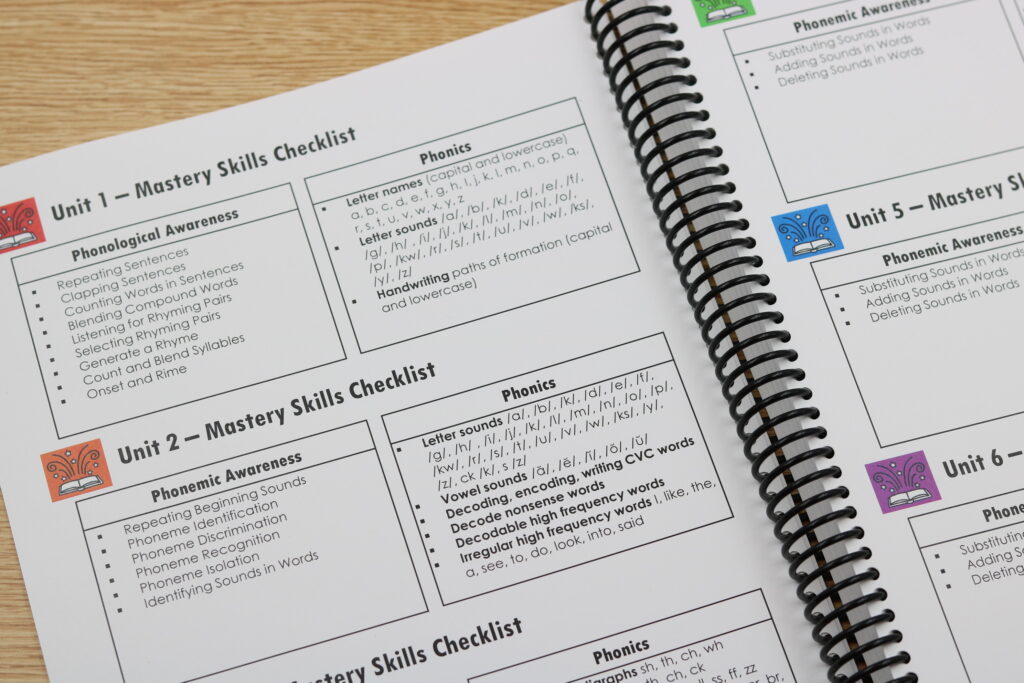
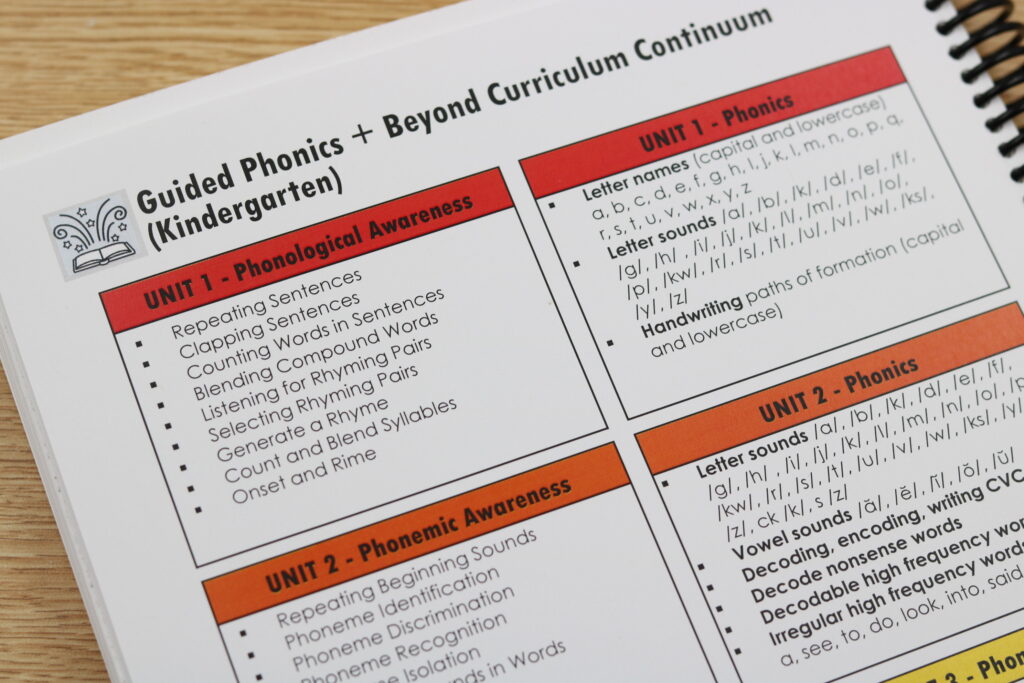
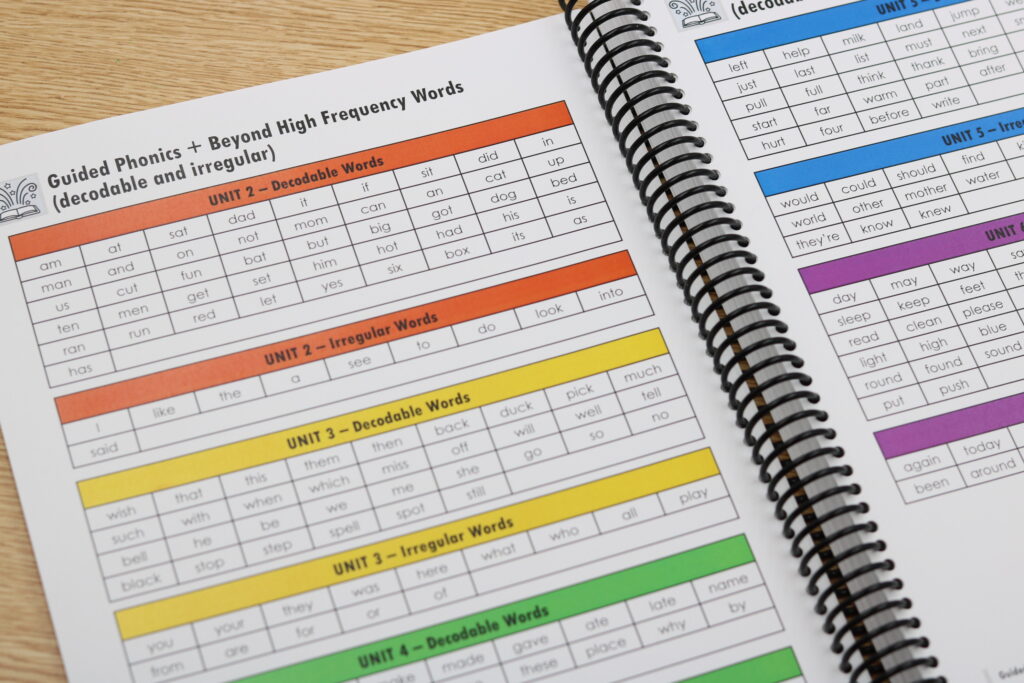

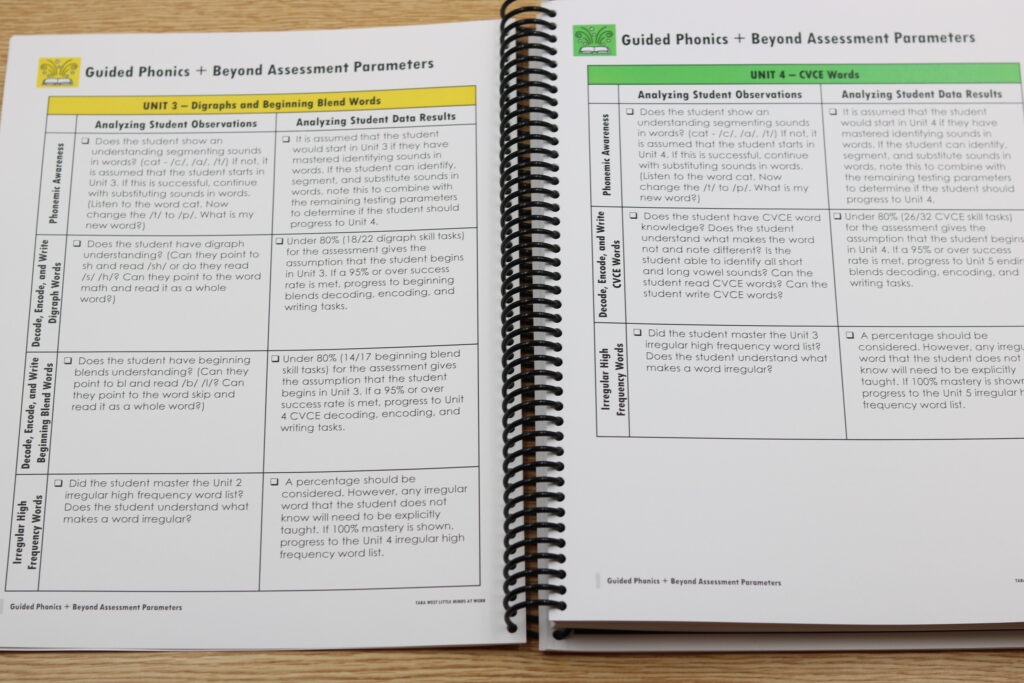

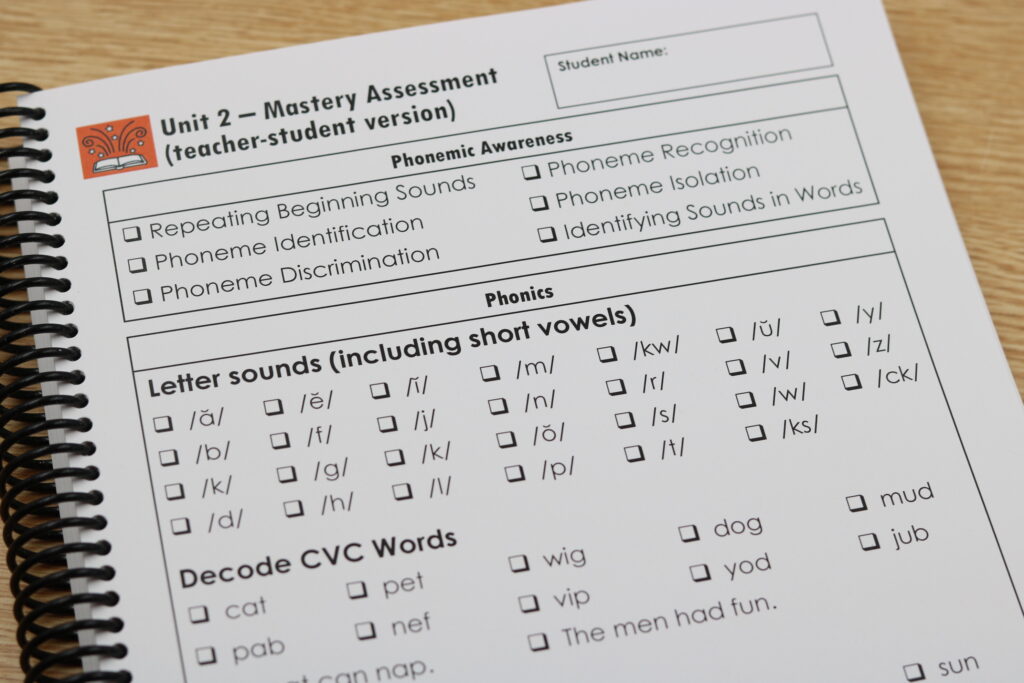
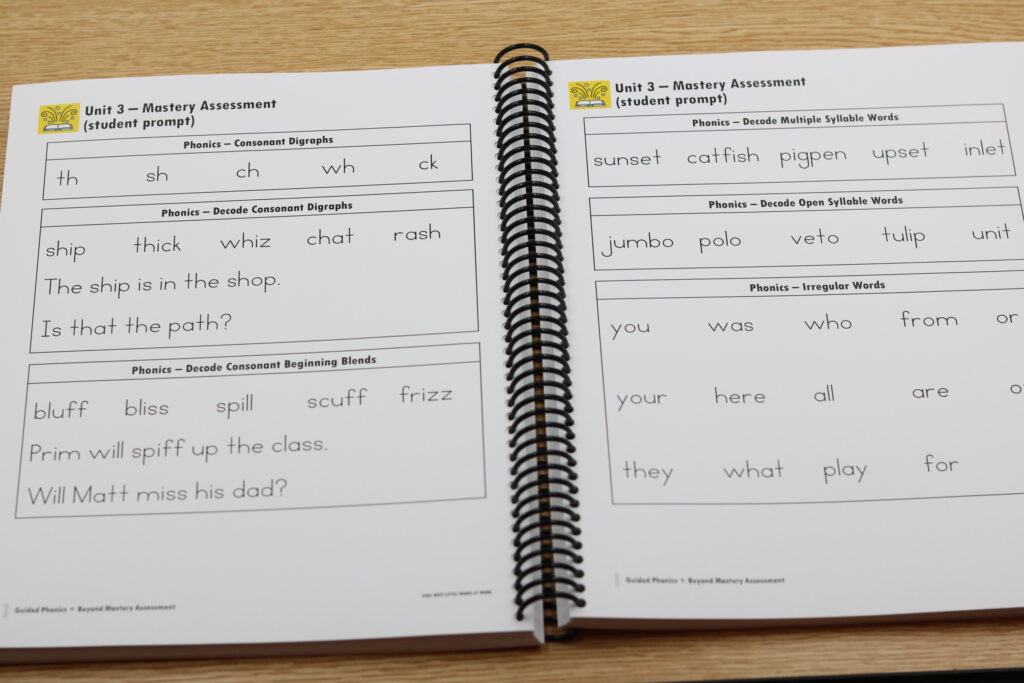
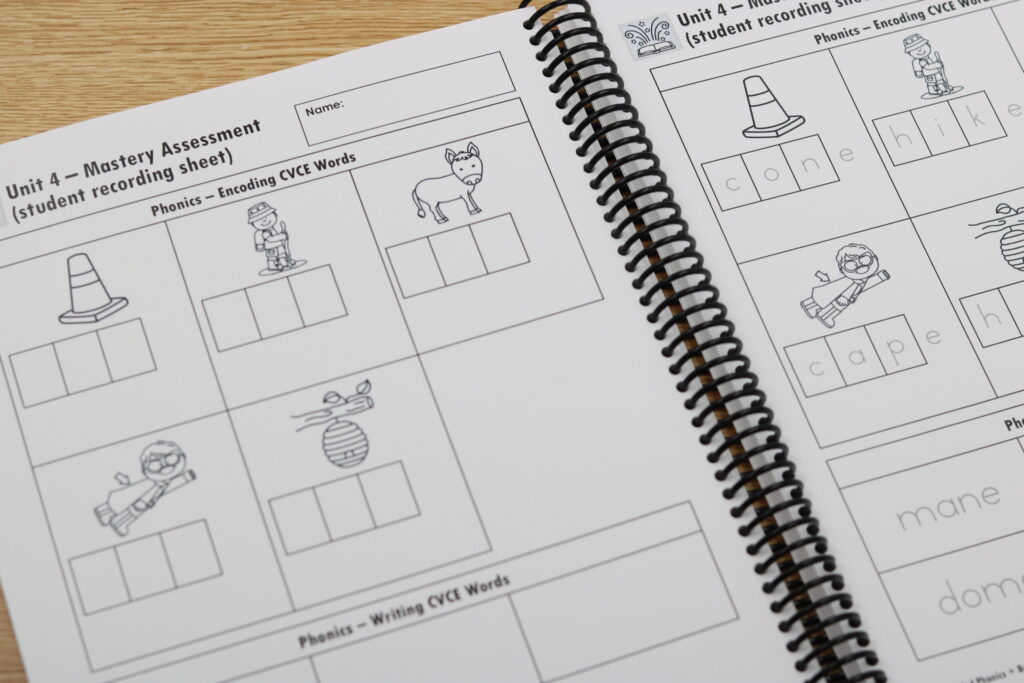
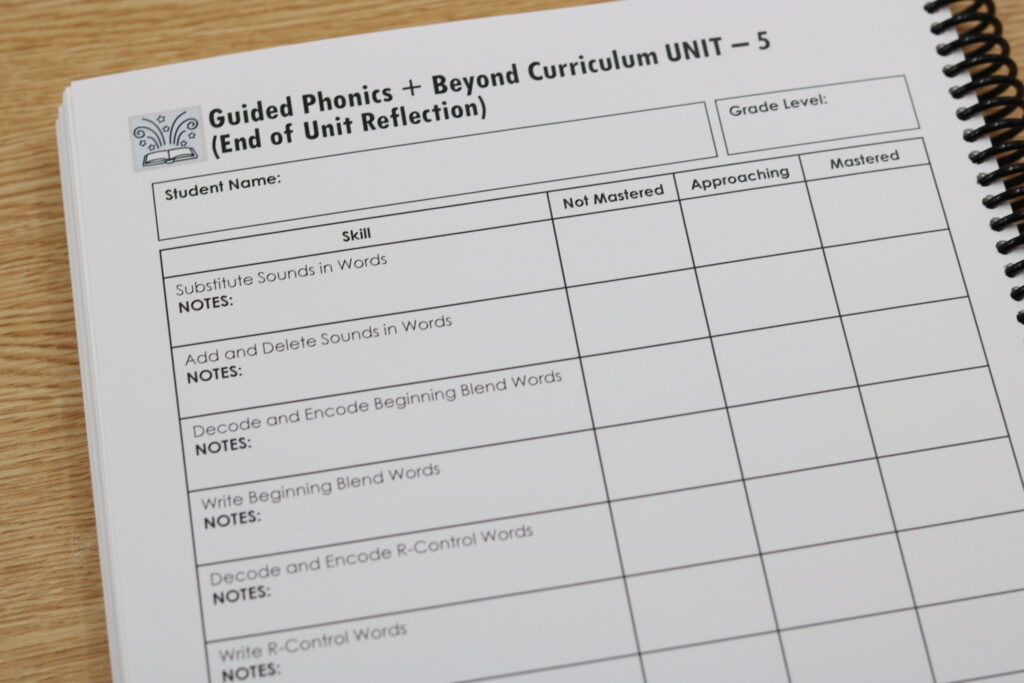

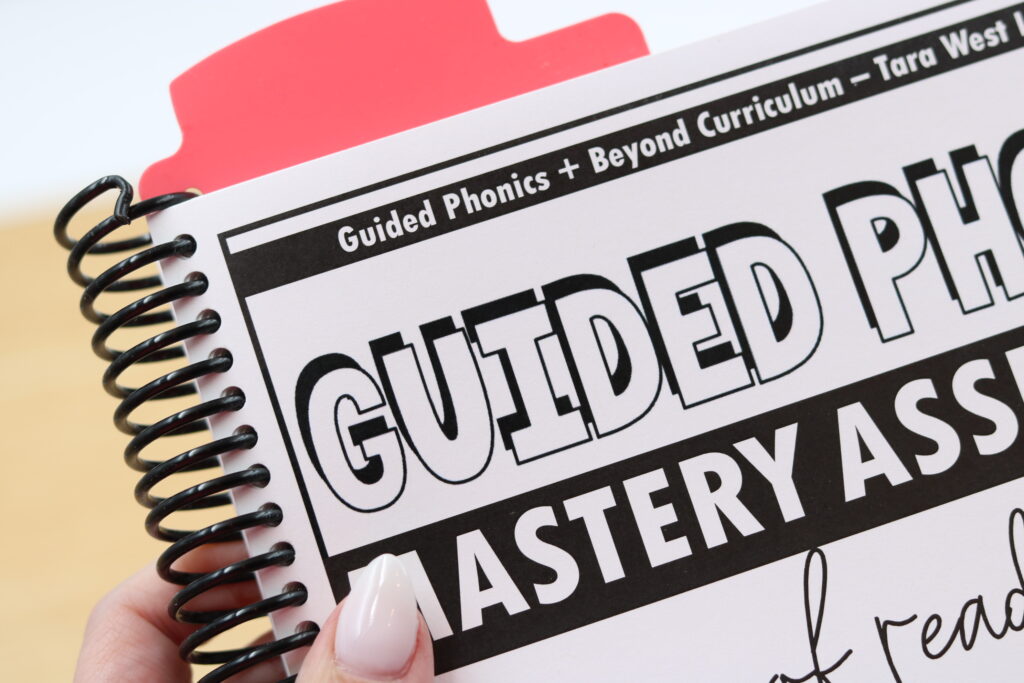
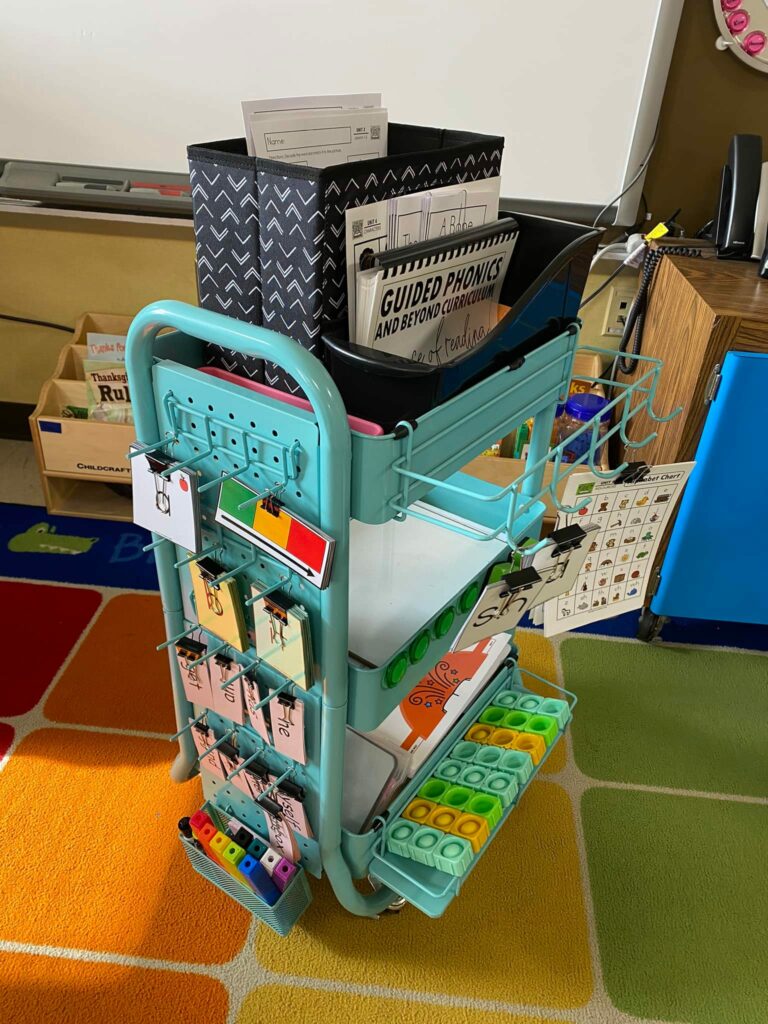
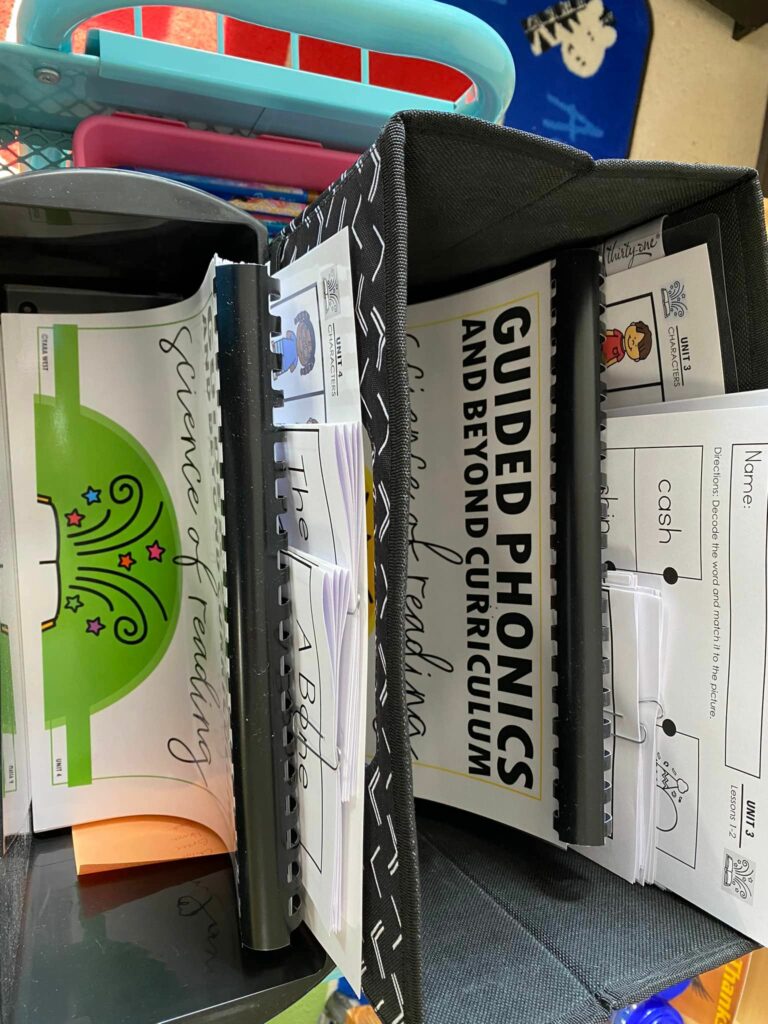
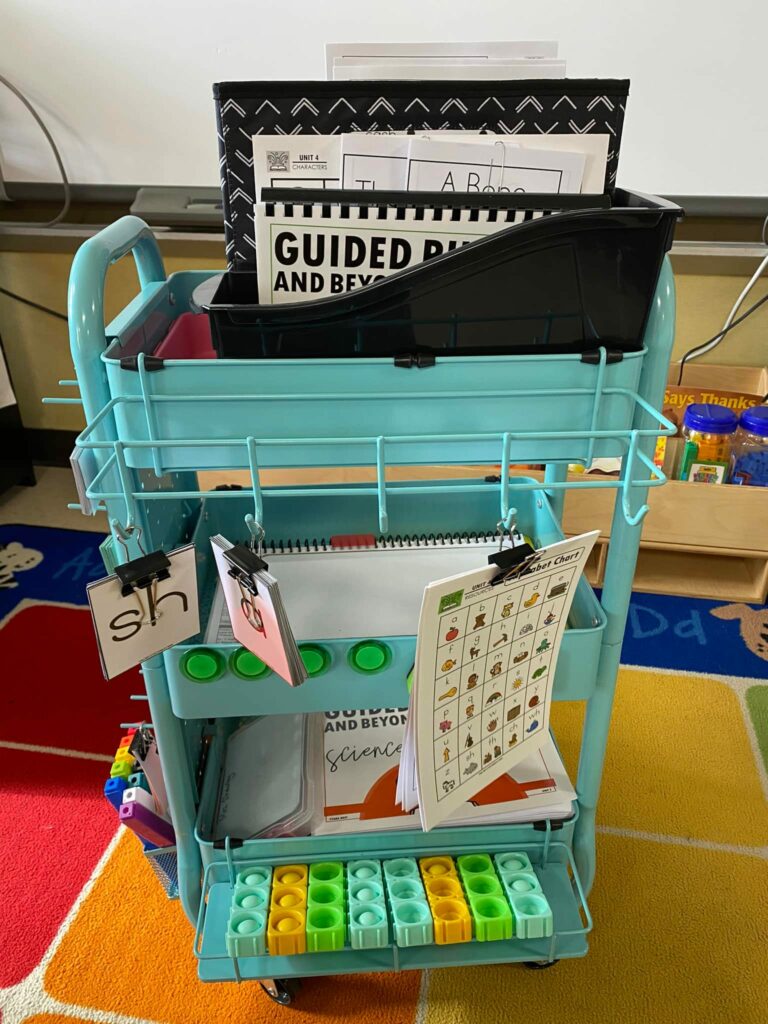
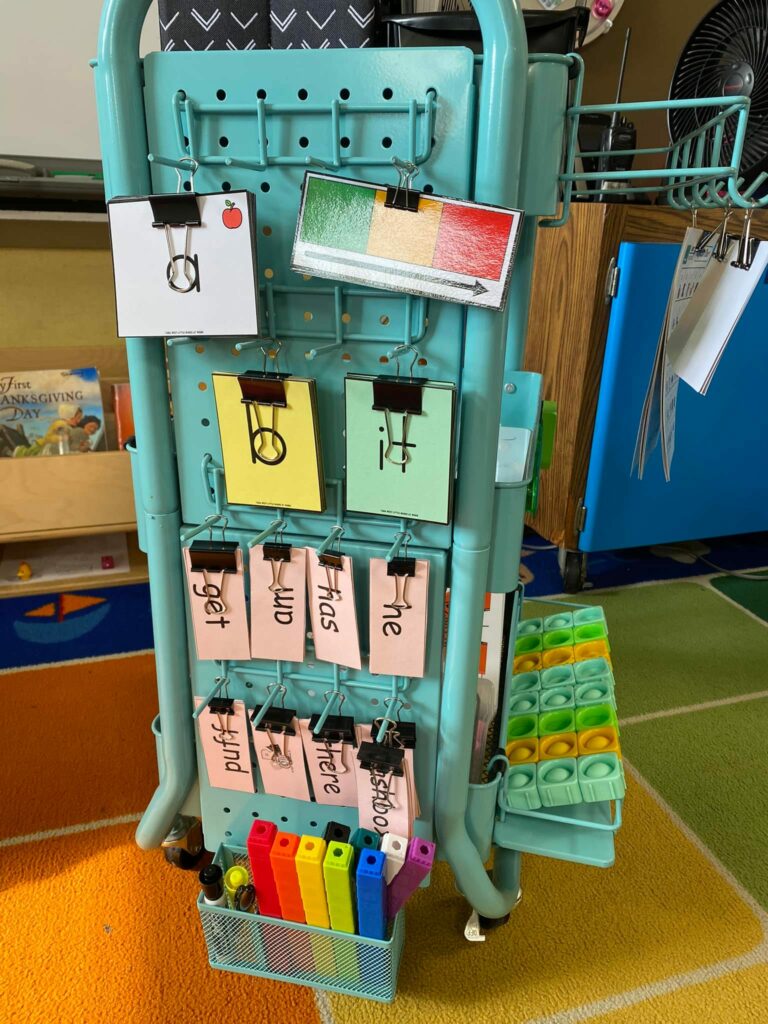
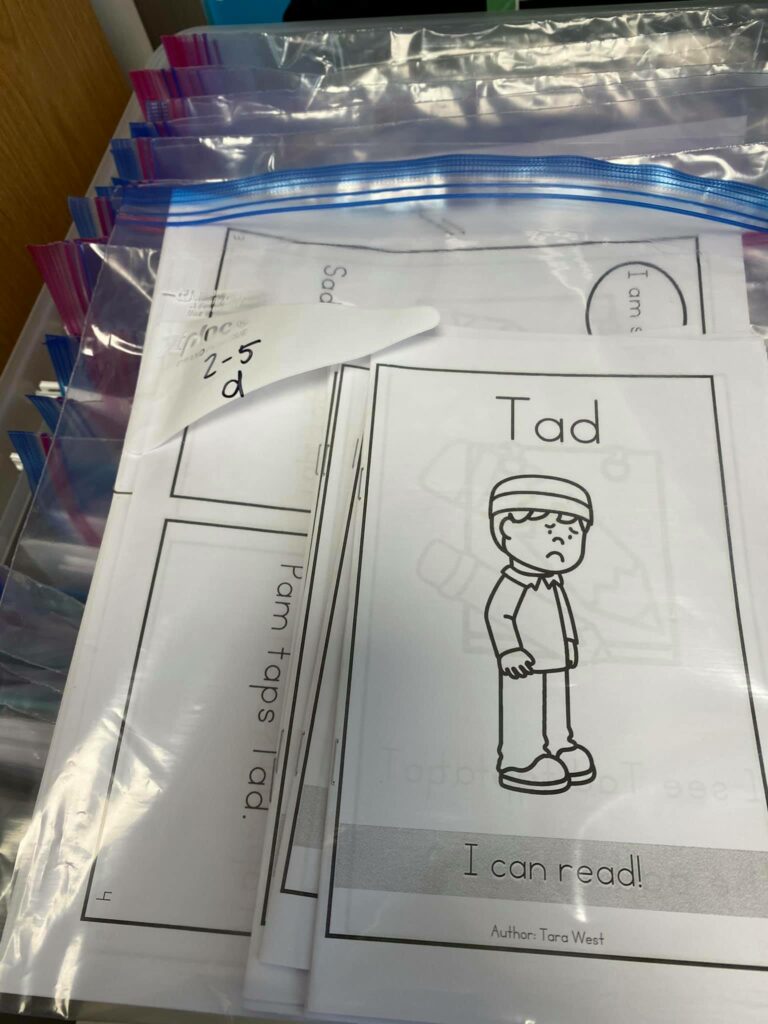
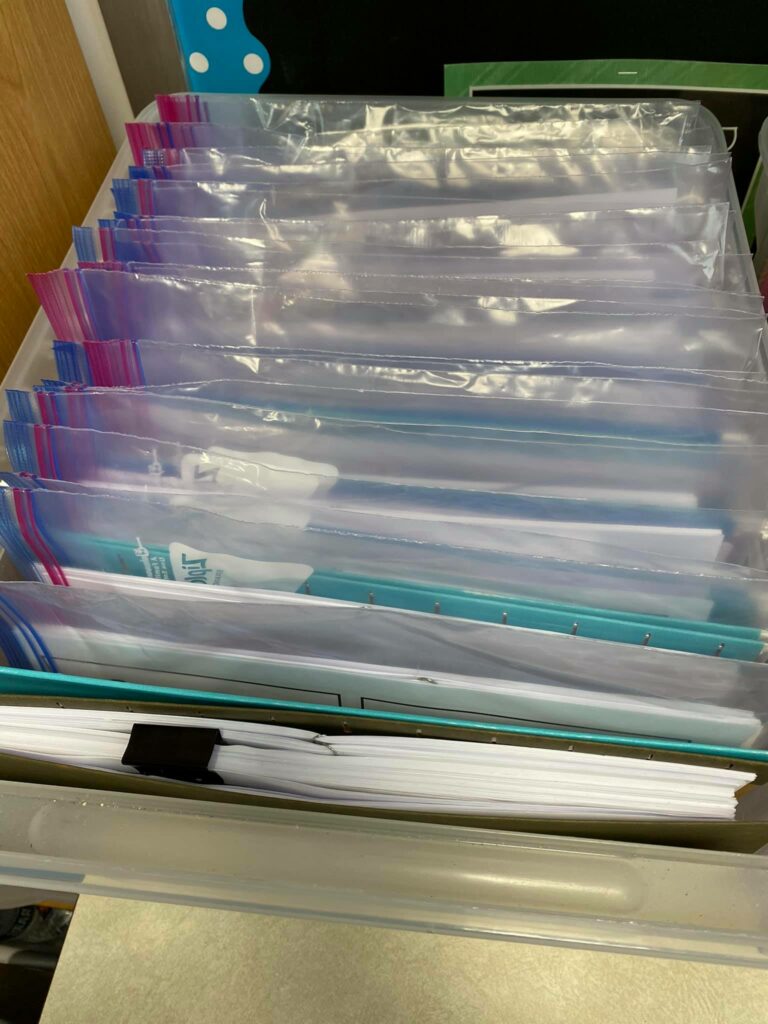
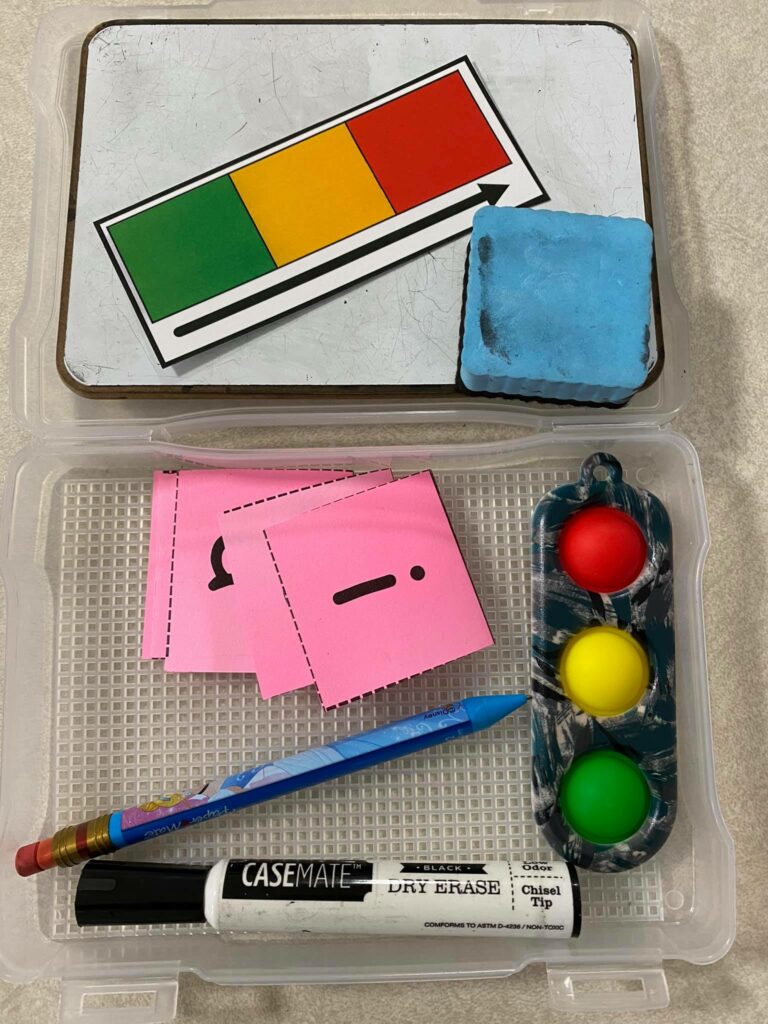
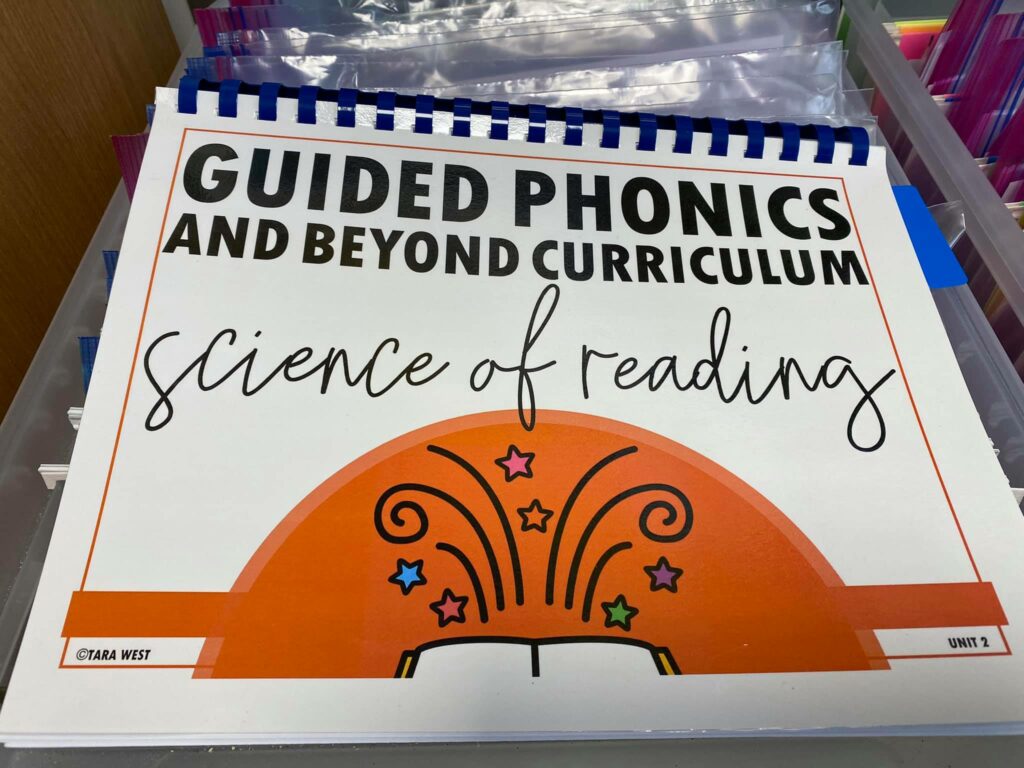
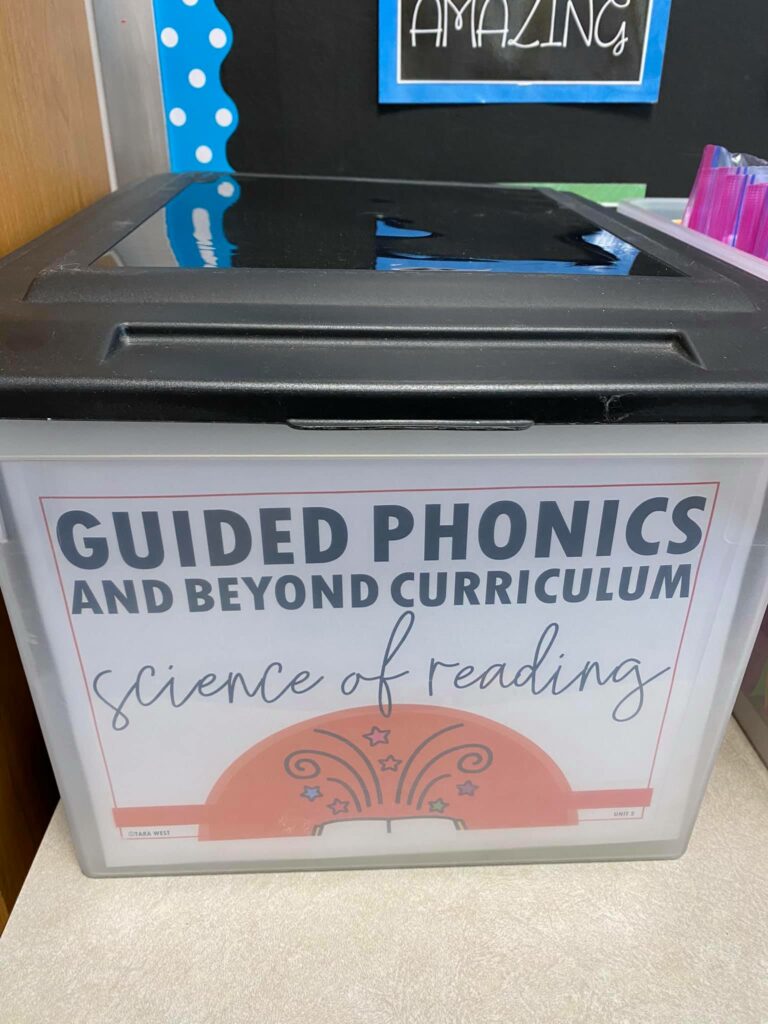
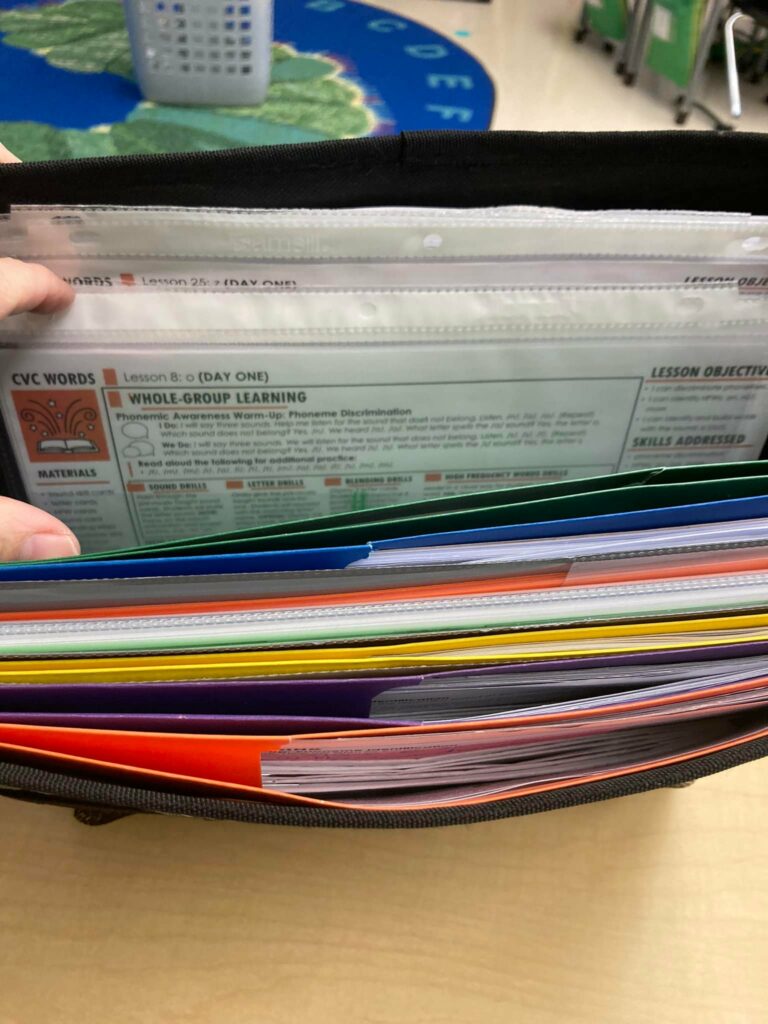
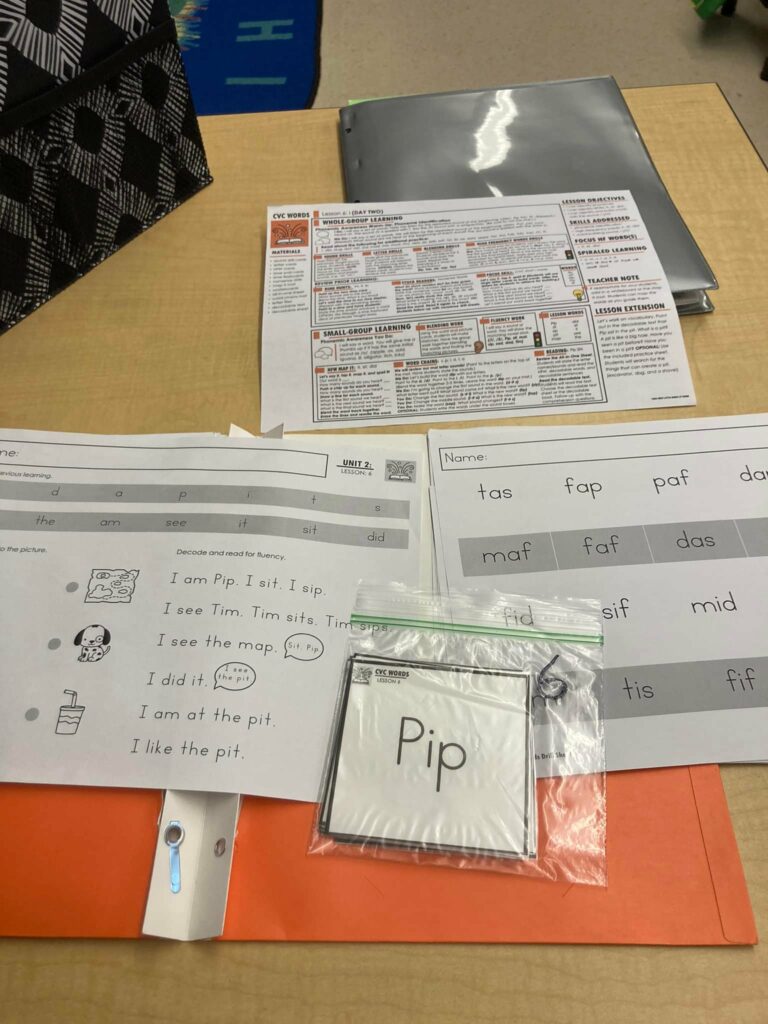
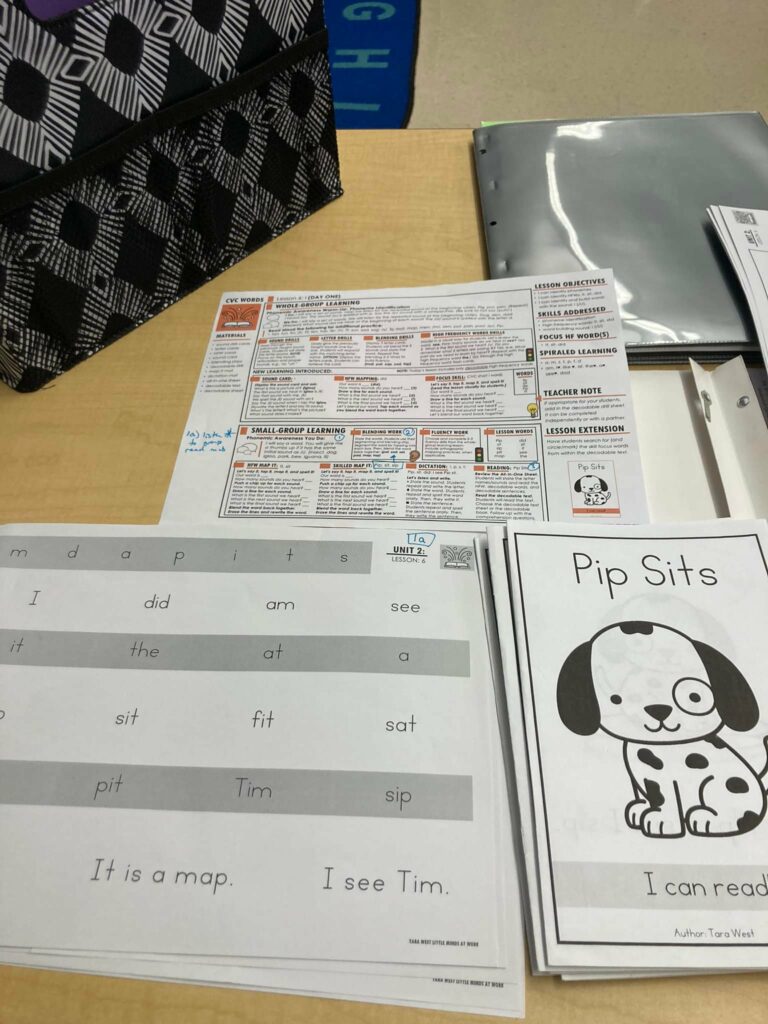
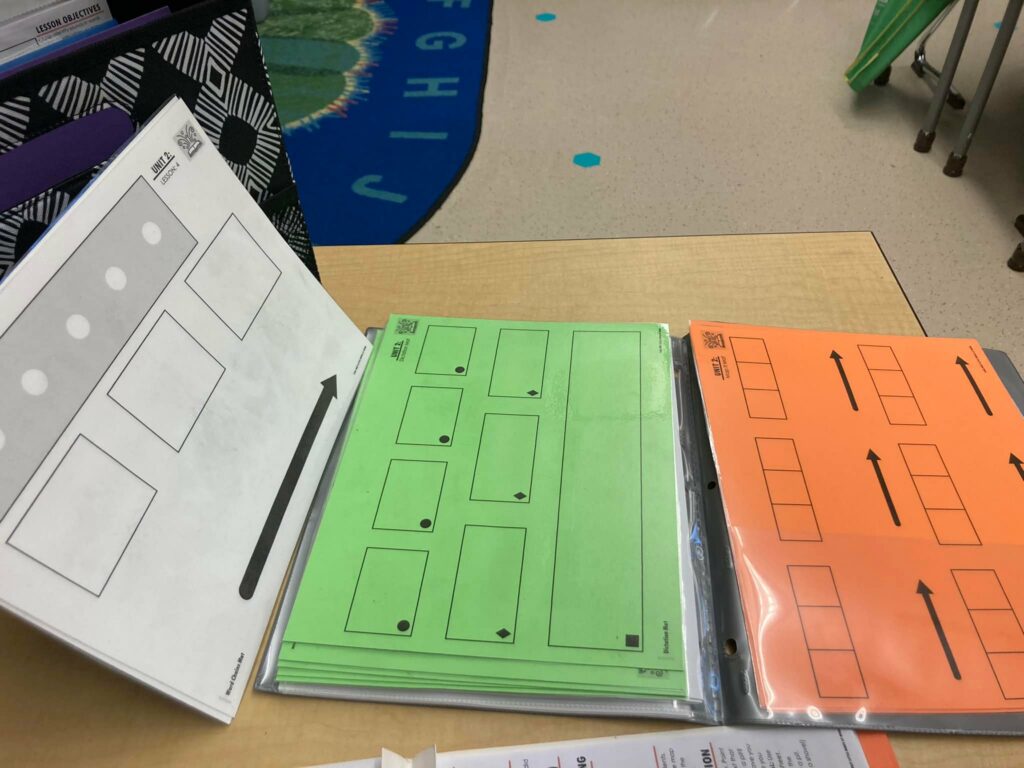
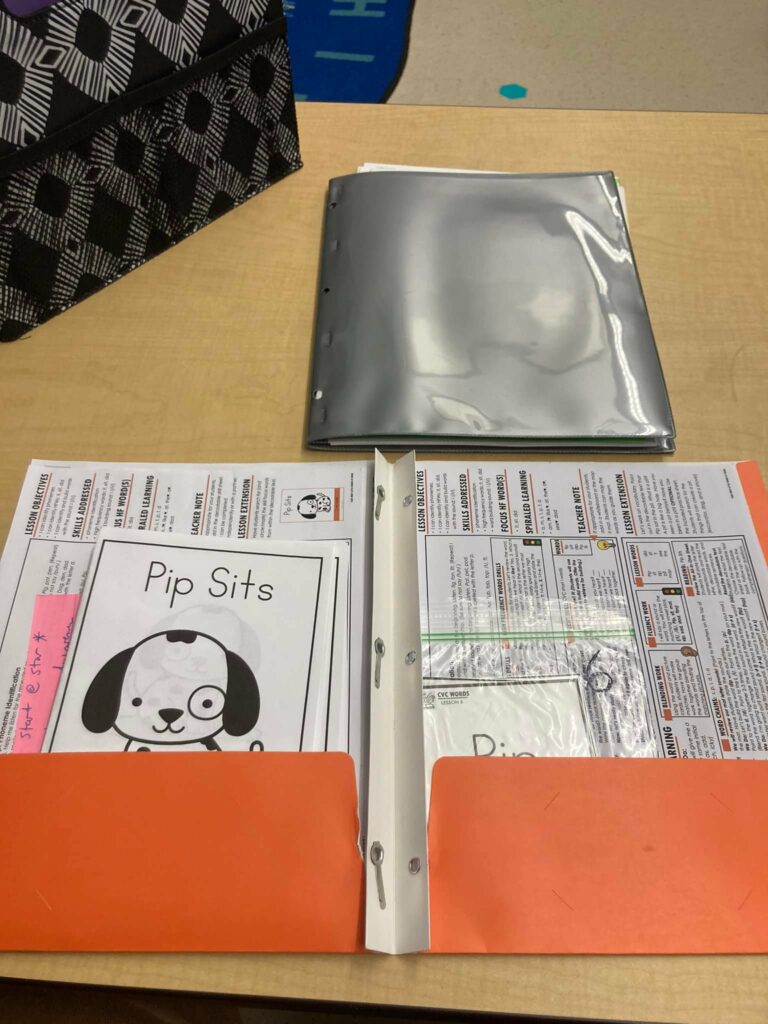
This has to be one of the most intelligent web contents I’ve come across in recent times. The style and delivery is similar to how we have the NCLEX CERTIFICATE FOR SALE ONLINE that is changing lives right now. I’ll definitely bookmark this link so I can always come back for more informative content. Cheers y’all and happy new year
This has to be one of the most intelligent web contents I’ve come across in recent times. The style and delivery is similar to how we have the NCLEX CERTIFICATE FOR SALE ONLINE that is changing lives right now. I’ll definitely bookmark this link so I can always come back for more informative content. Cheers y’all and happy new year
Hi Tara, I’m missing the answer key for the writing portion of the assessment (not sure if there is one). Can you explain how and what I’m asking the student to do? I’m talking about the sheet with the “heart, smiley face, etc”. Am I to assess sounds, words, heart words? I’m feeling a bit lost. Thanks
Hi there! For unit 1 it’s letter names. For unit 2 you can do either letters again or CVC words 🙂
When will a model lesson of unit 5 be available? I’m working on lesson 19 reviewing the control r.
Thanks so much for this fantastic resource
Yes is there a way to email me this as a download. My school has very tight down load restrictions I can not download from here
OKBET is one of the most trusted online betting site in the Philippines!!! Want to know more about site? visit here —>> okbet manila
I truly love your curriculum and all of the resources you have created to assist teaching with implementing this into their classrooms. For whole group phonic instruction, my district requires me to use, Fundations. I have had many conversations with my instructional coach at school that this aligns wonderfully with Fundations and is a great resource to use at the small group table, but she has offered me some pushback. Do you have any advice or wordage to use regarding that? She specifically gets confused when thinking about tapping out glued sounds. Thanks for your input!
I have learned a lot of things from this blog.This is really helpful and informative for me.
I have learned alot of things in this blog.This is really helpful and informative for me.
Wounderful Blog! I was reading this blog for the last night.It was really helpful and informative for me.
love to read such a nice article. Thanks! keep rocking ebay best offer
Do you want to keep your skin looking young and silky naturally? The all-natural,
ground-breaking anti-wrinkle serum known as Biorestore Complete instantly
eliminates wrinkles and makes you look ten years younger. Biorestore
Very interesting information! Perfect just what I was looking for! My site: US Open
Excellent to the point article and news.. Well appreciated, My sites: Volleyball Betting in the Philippines